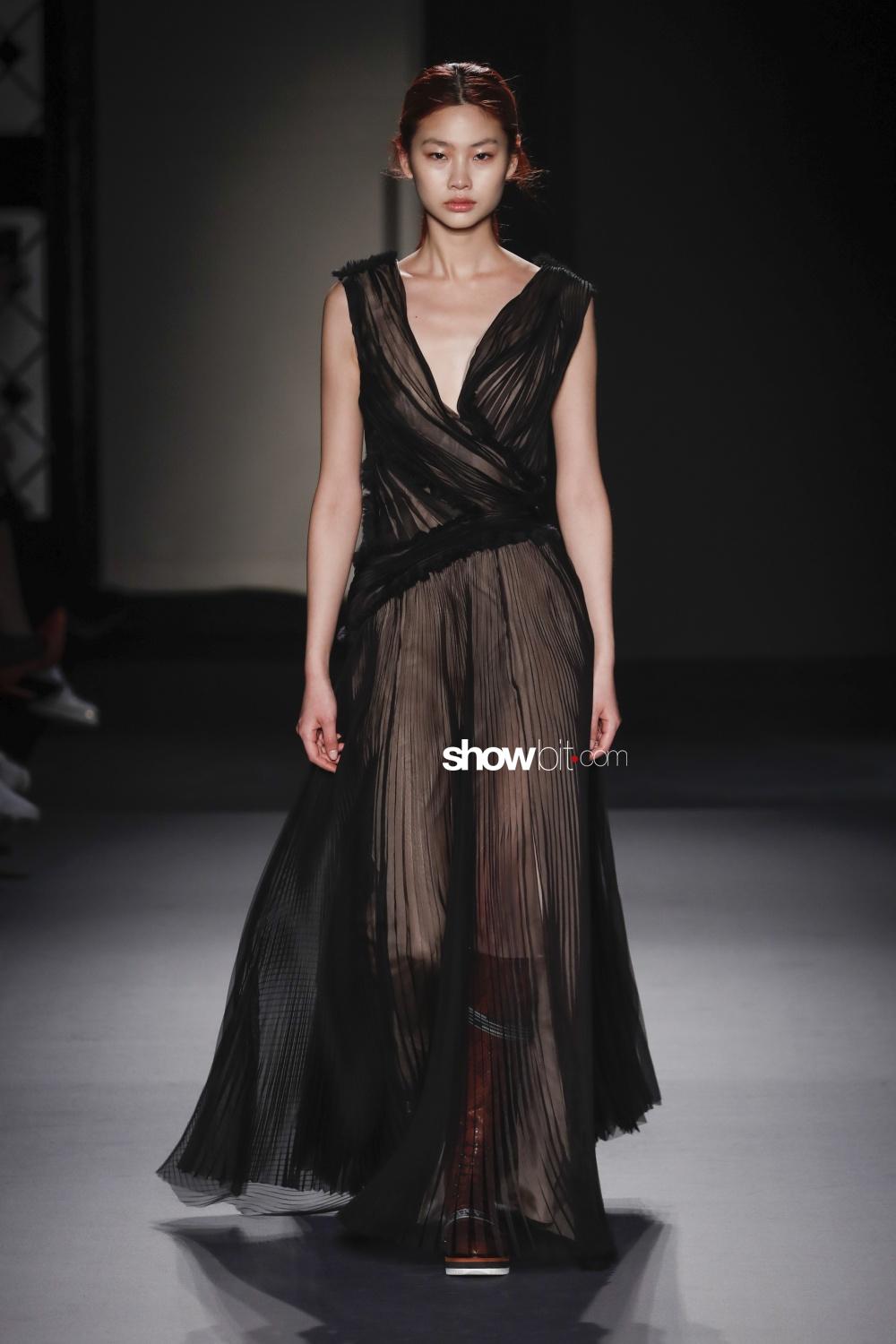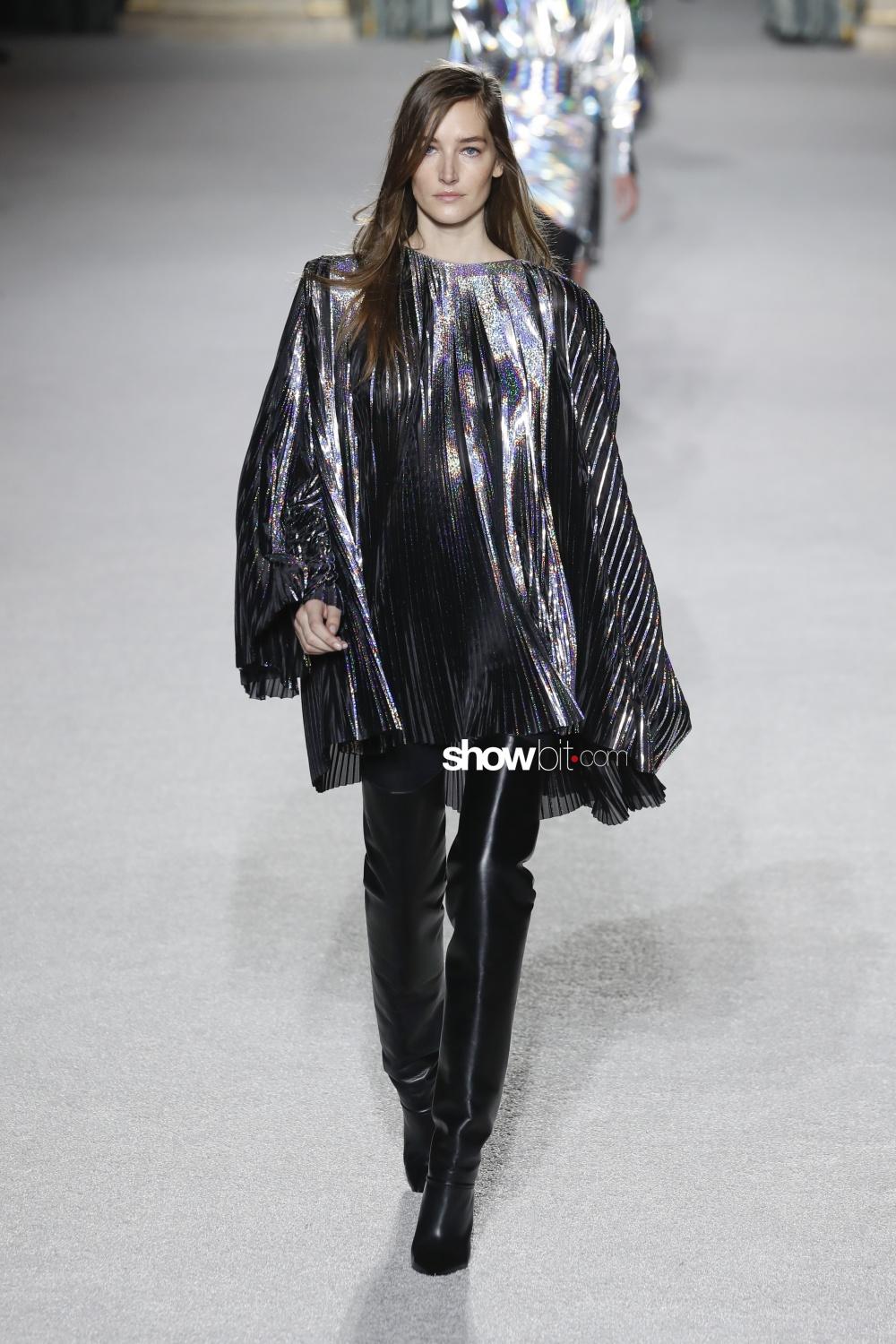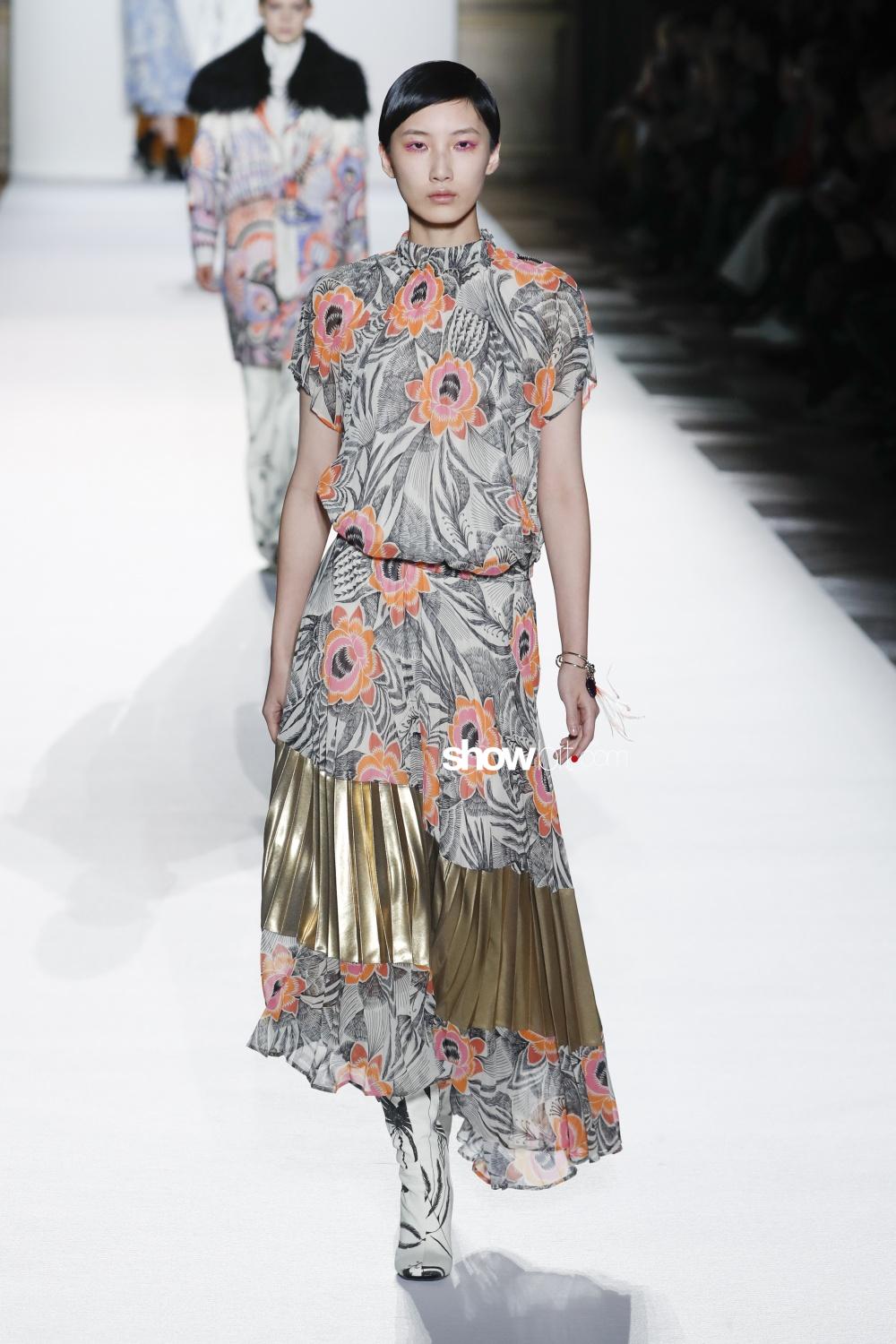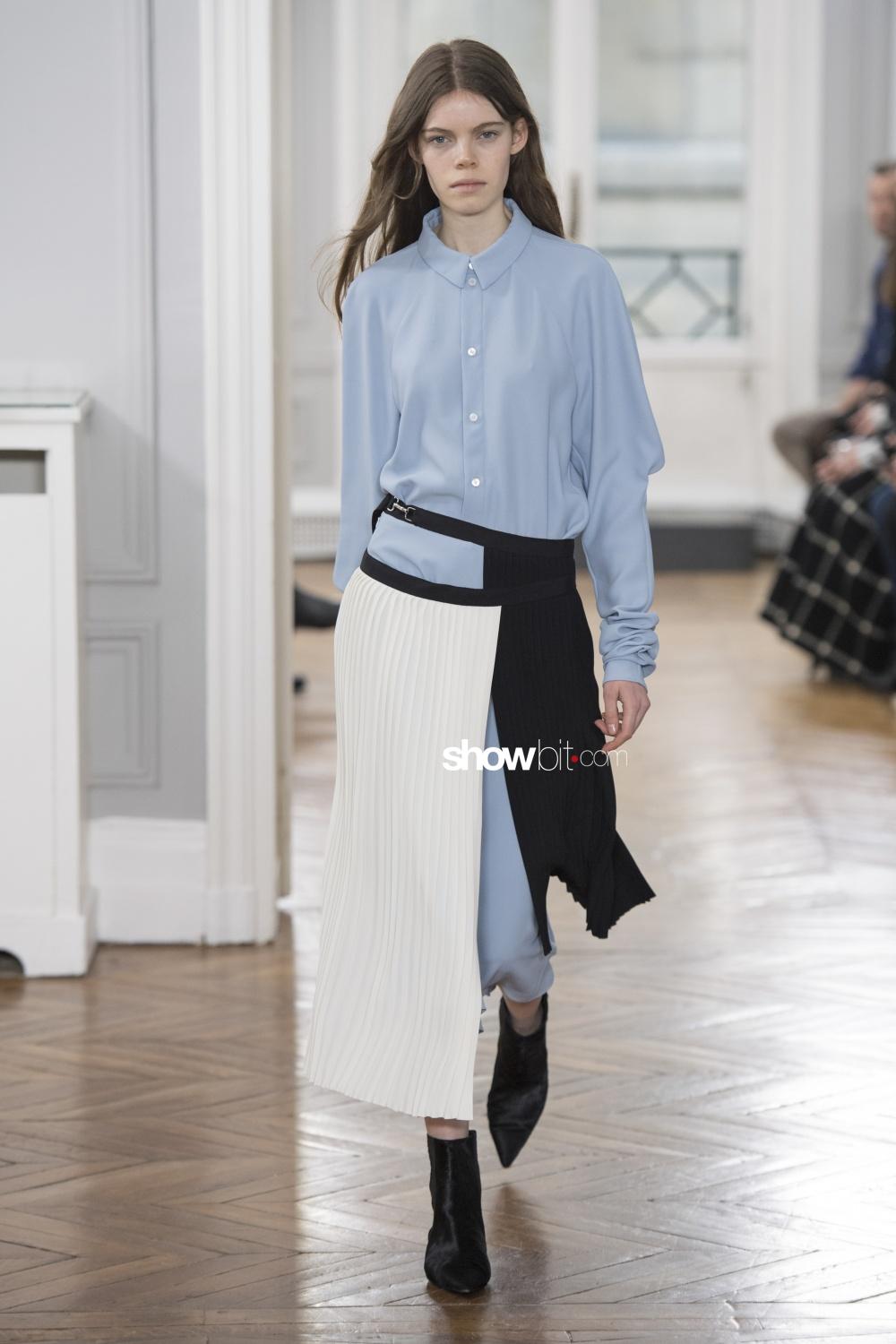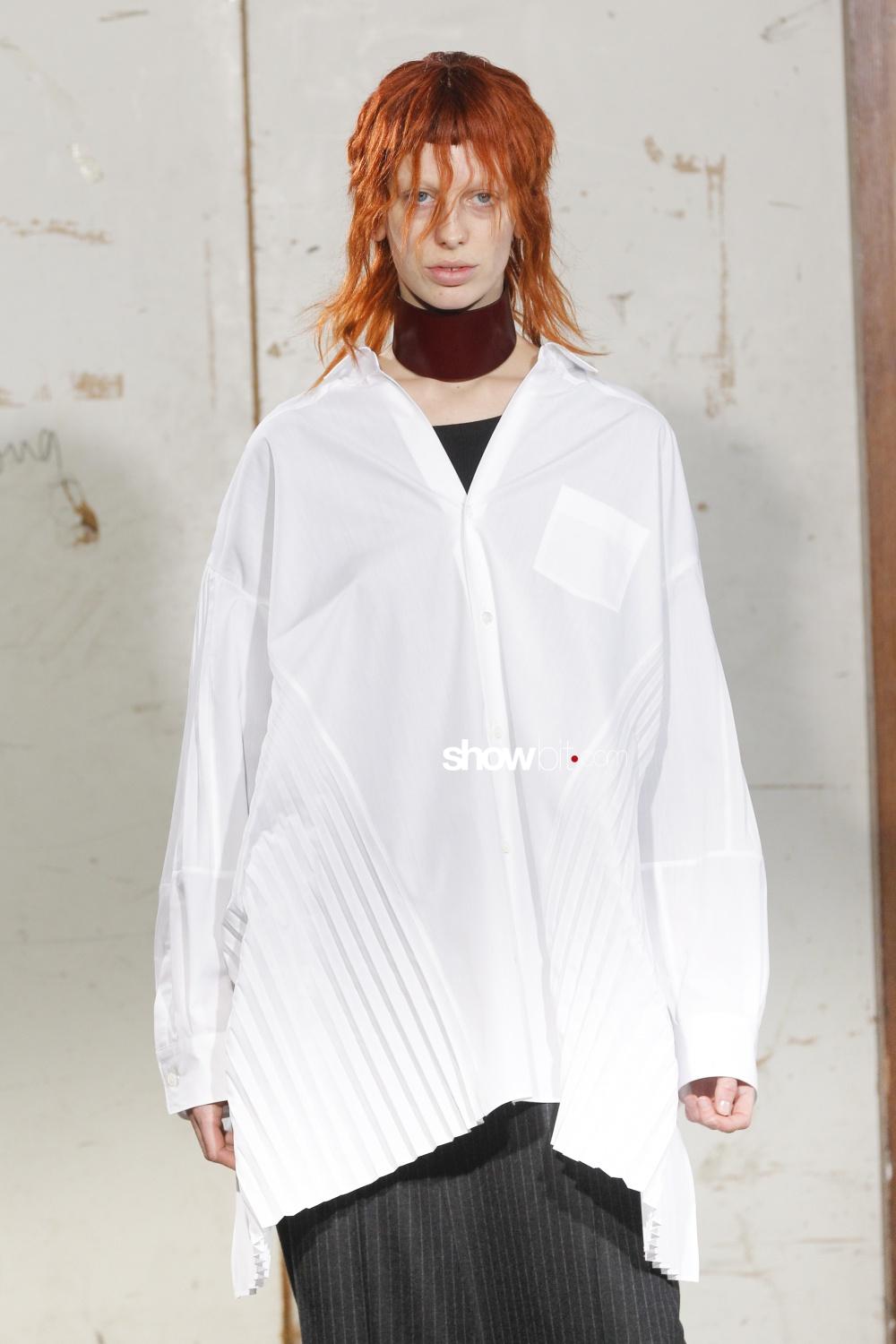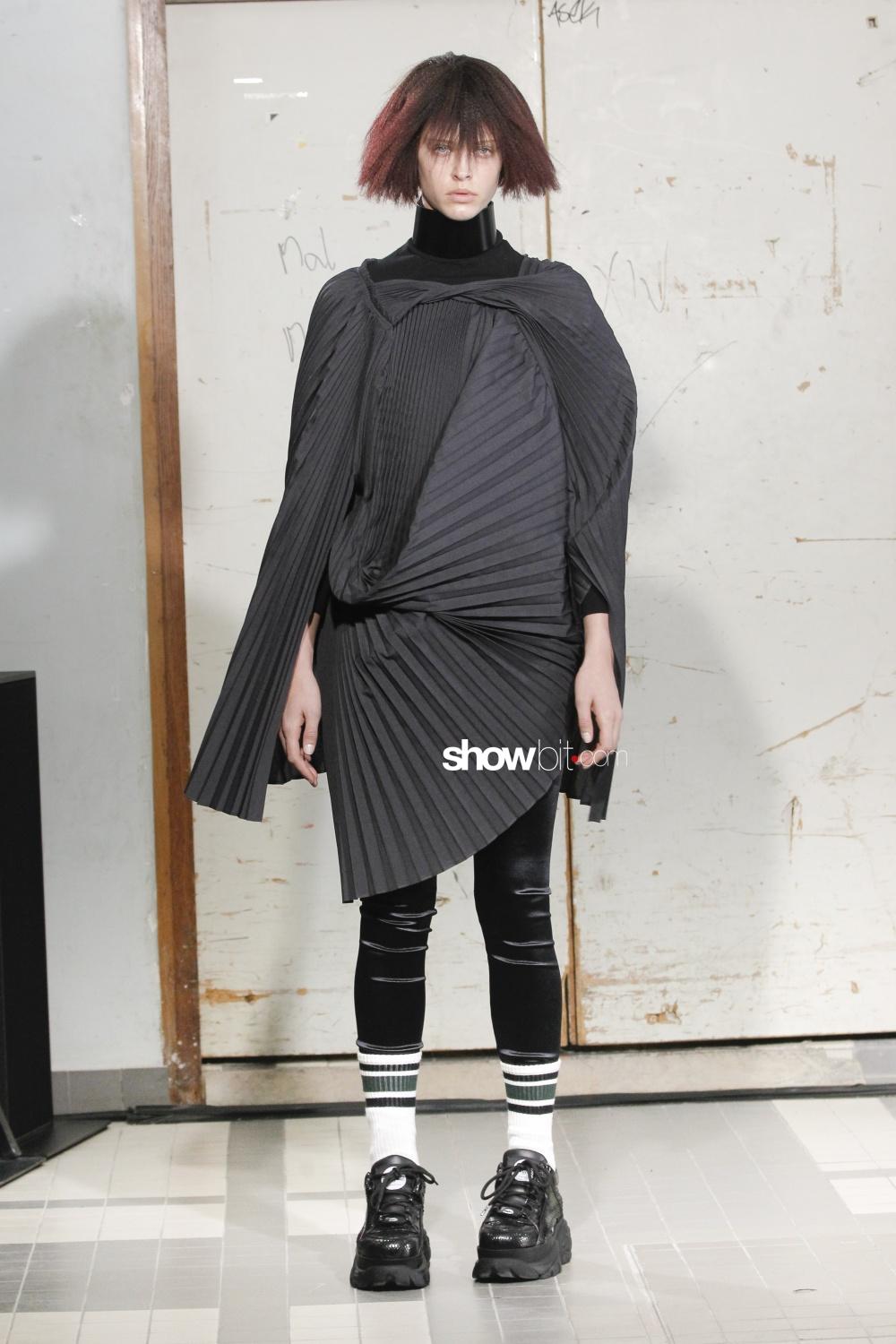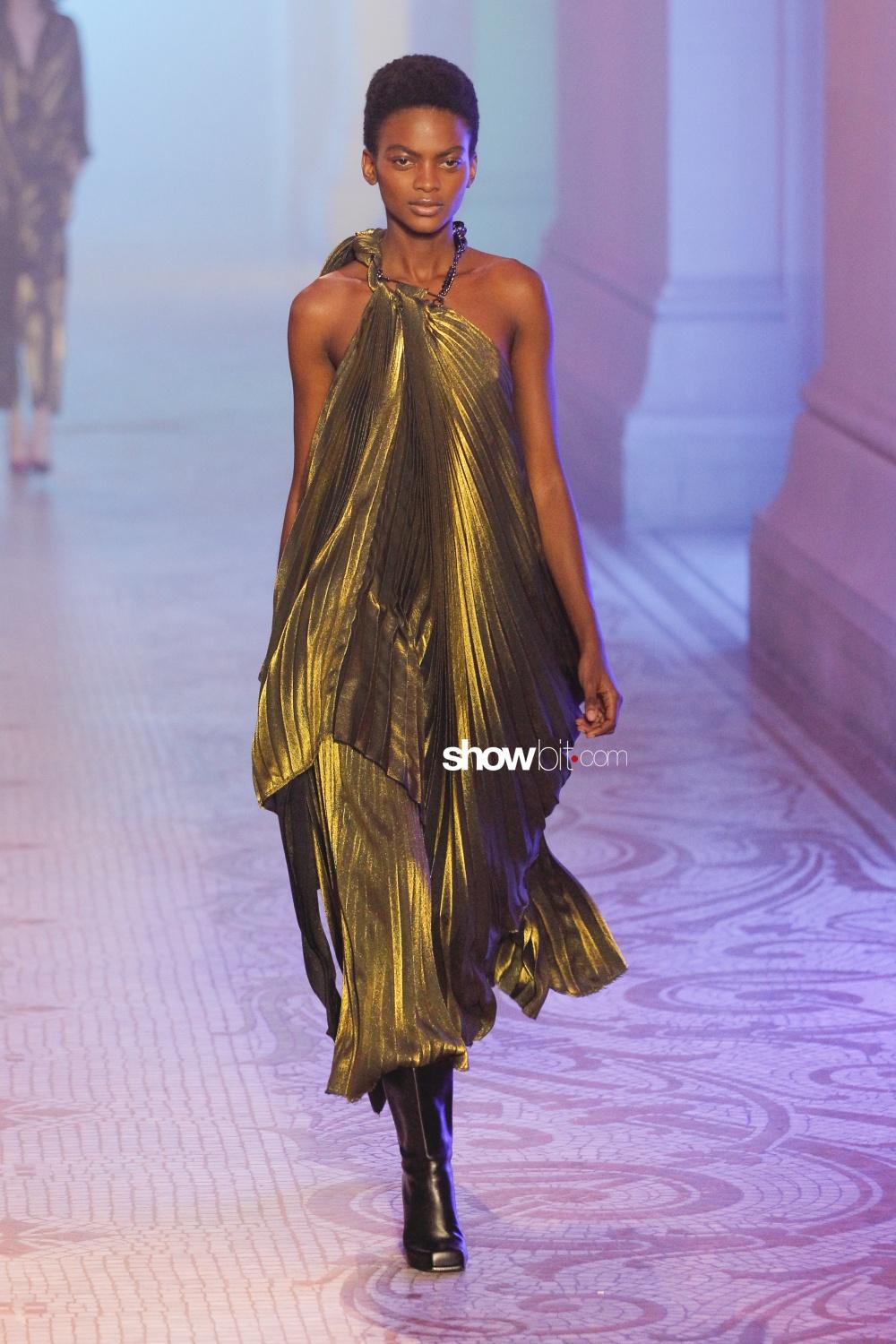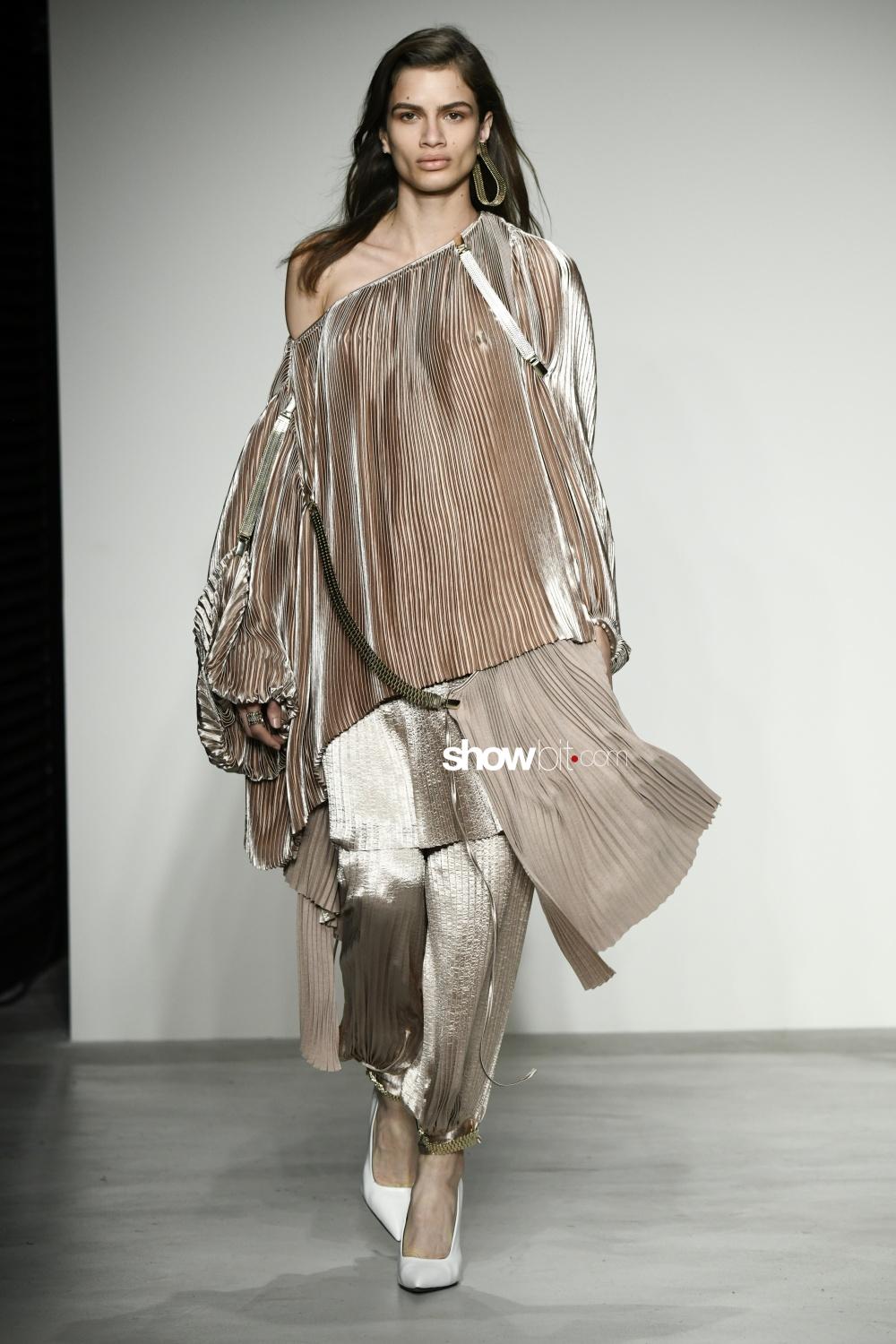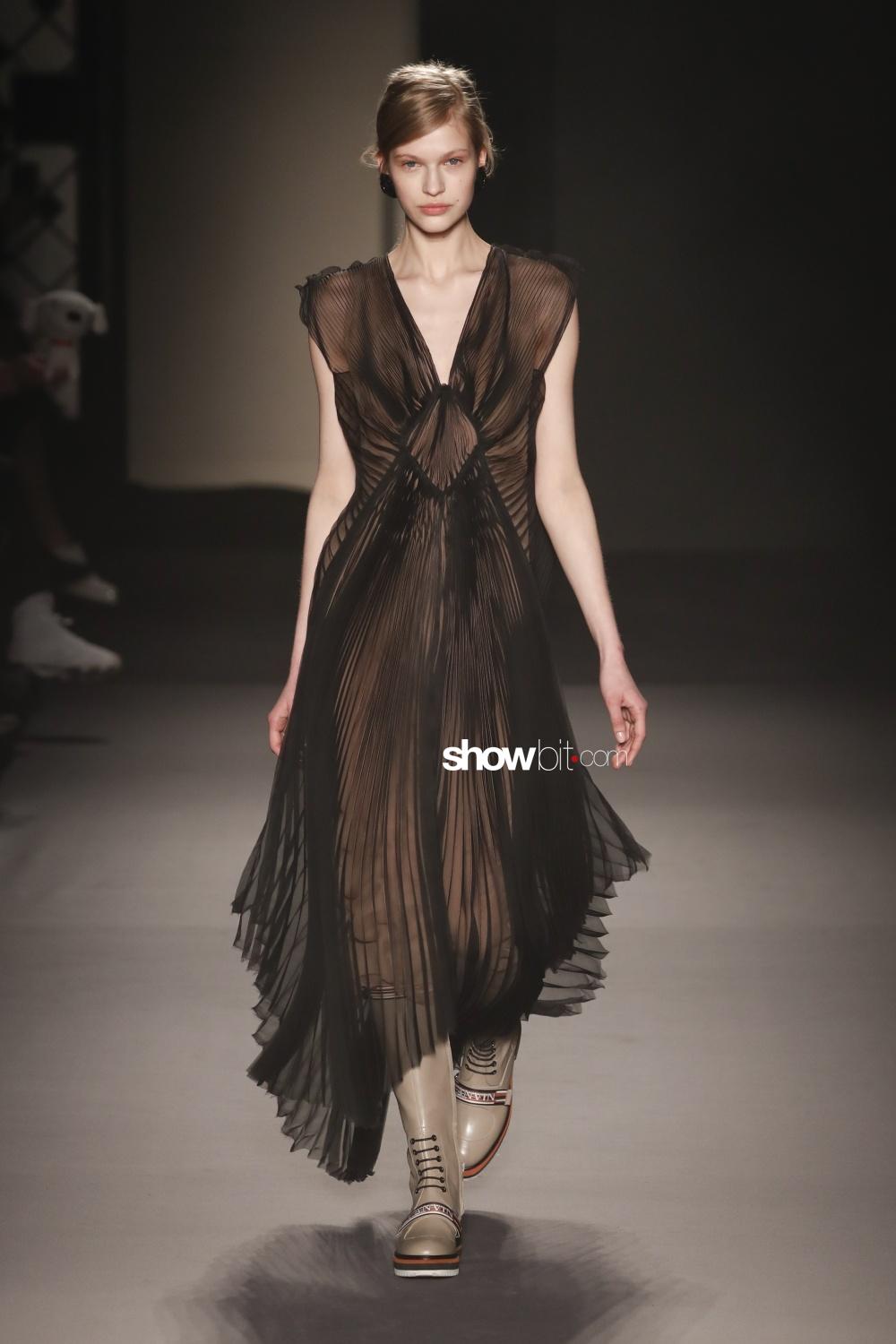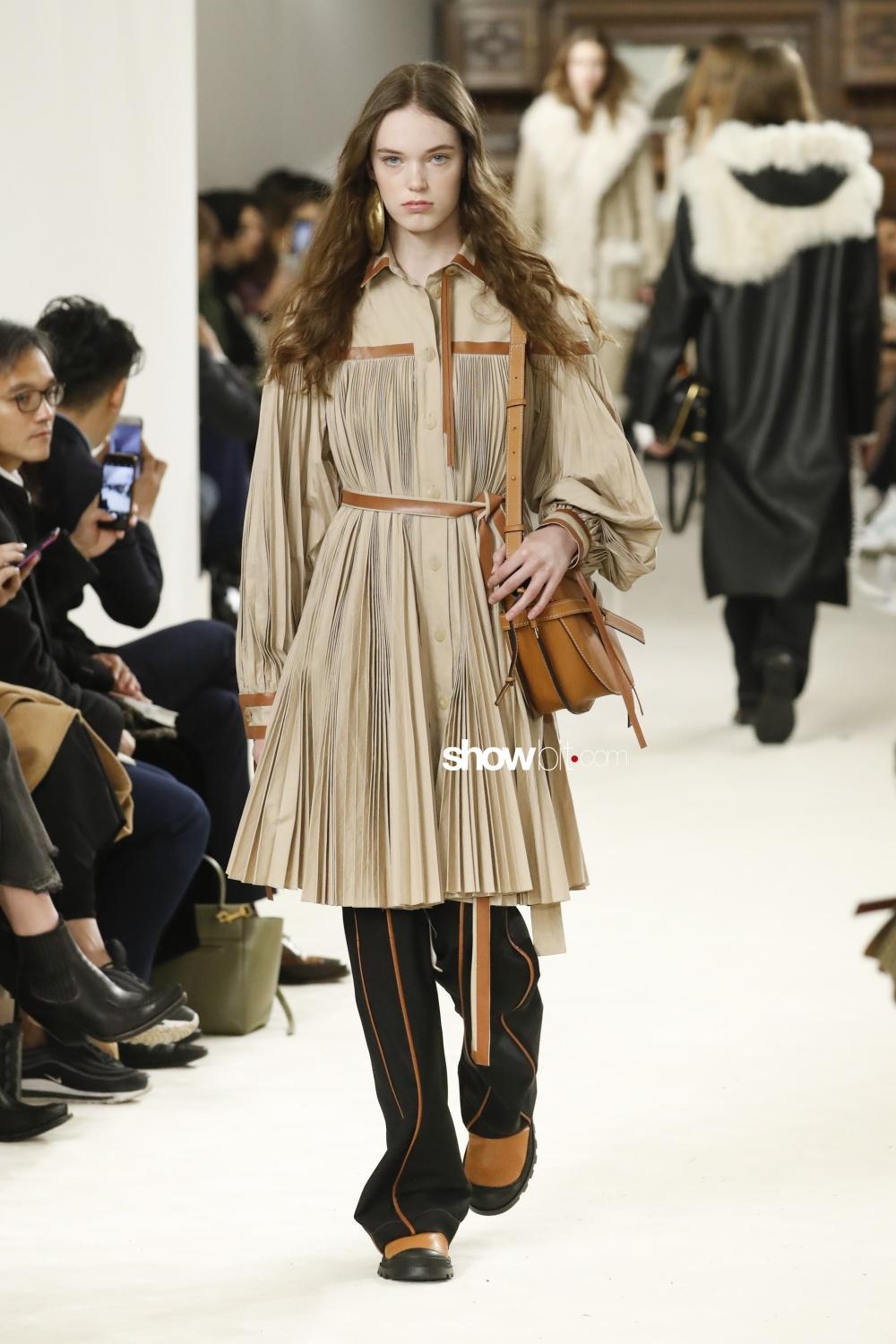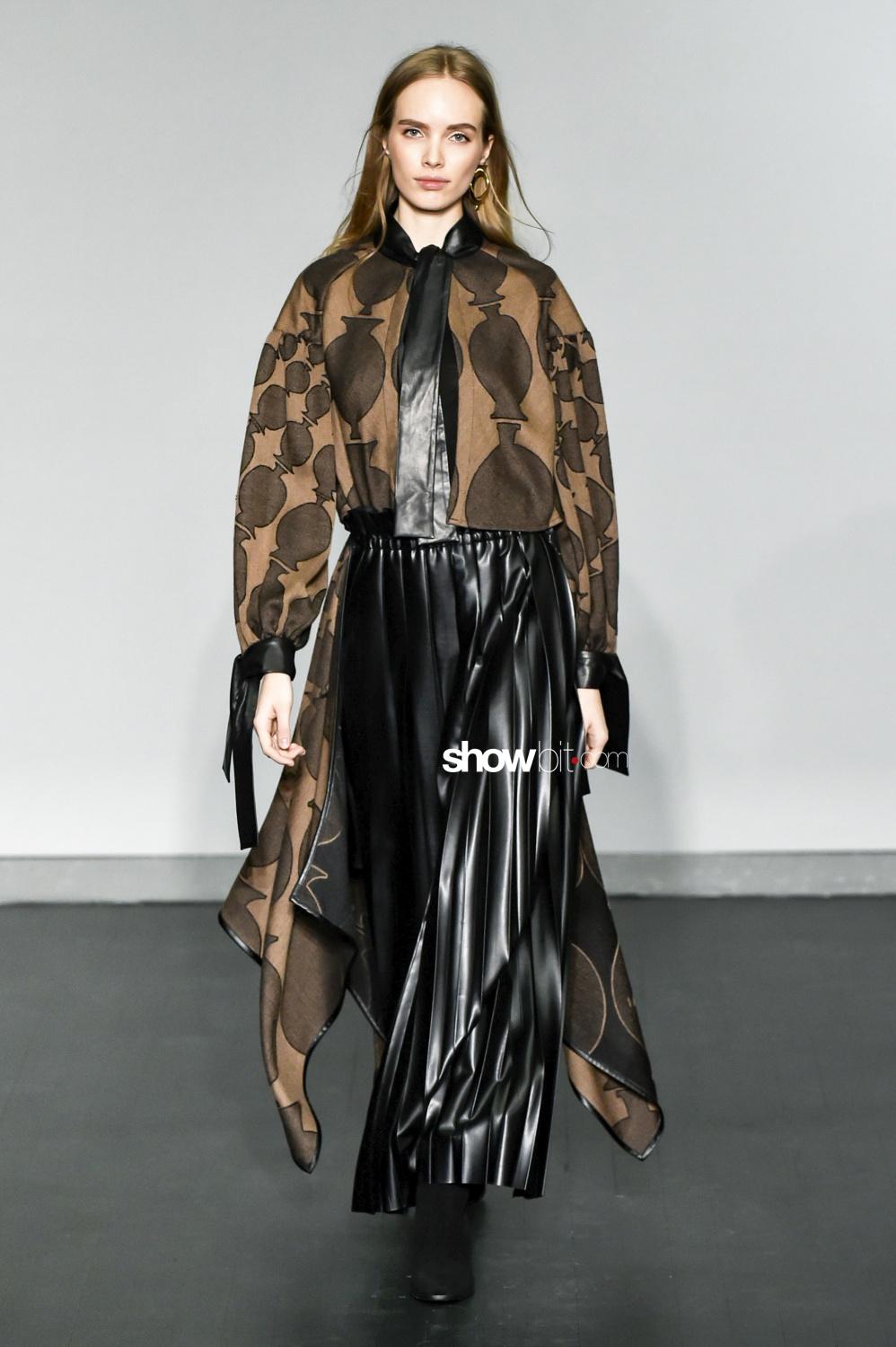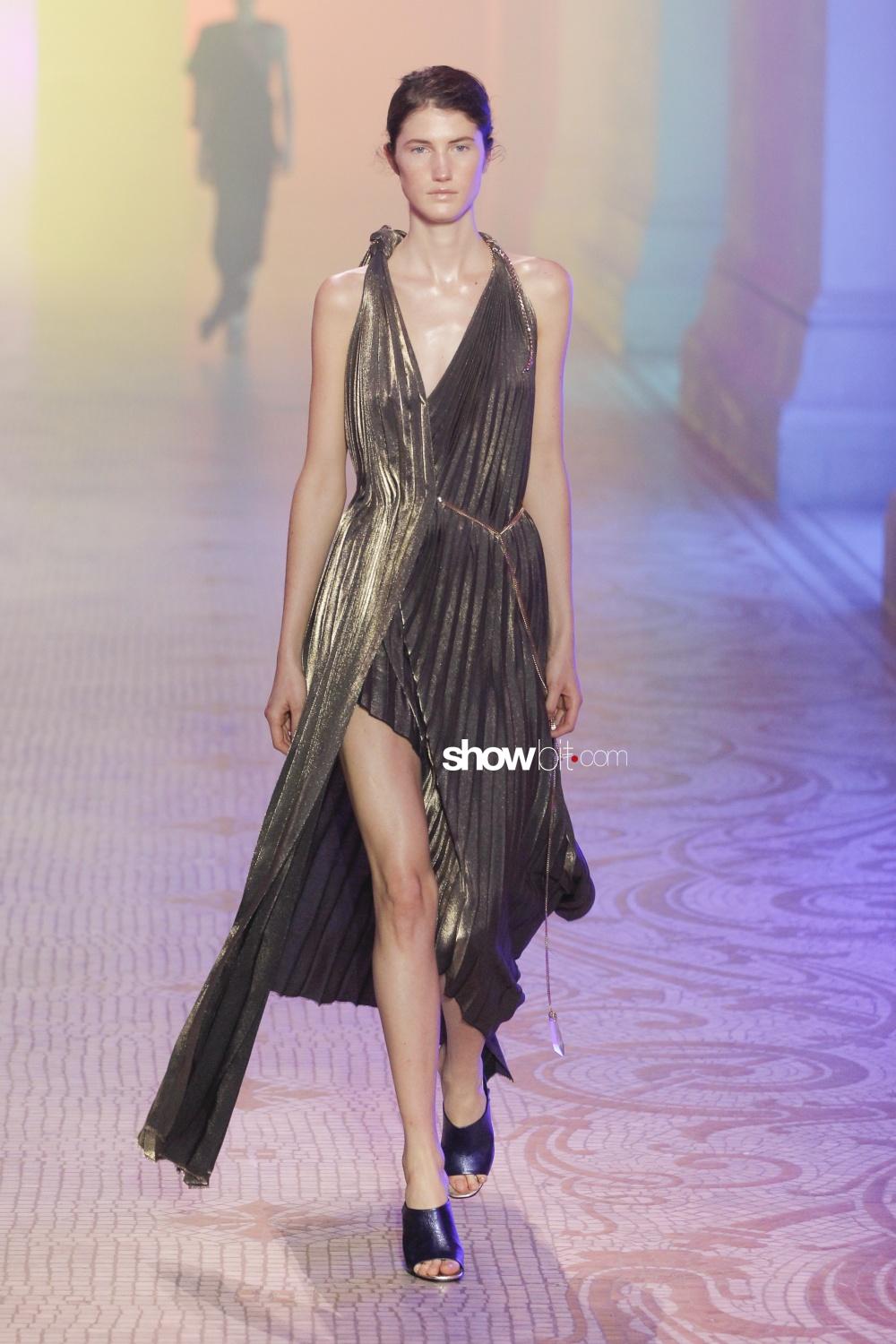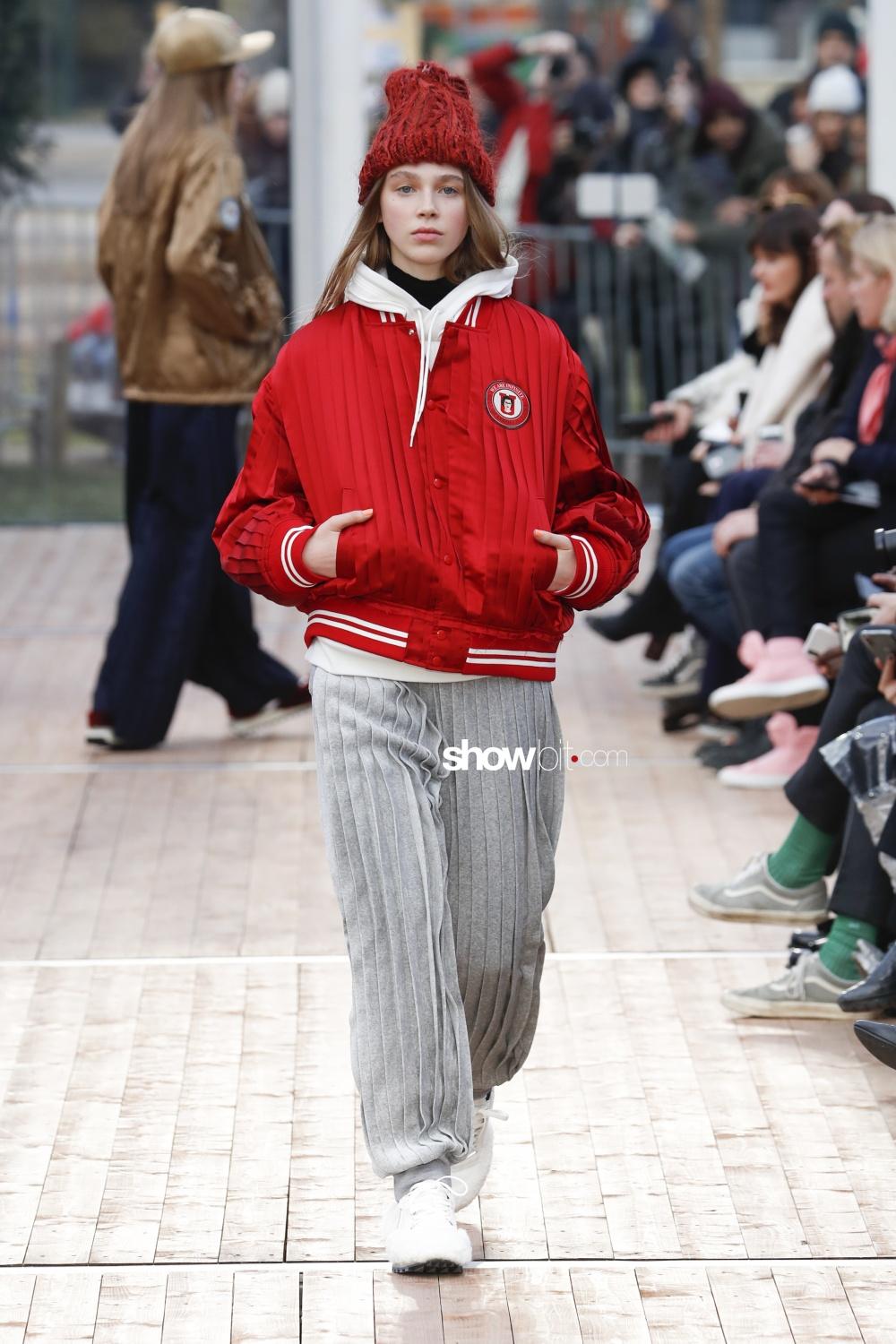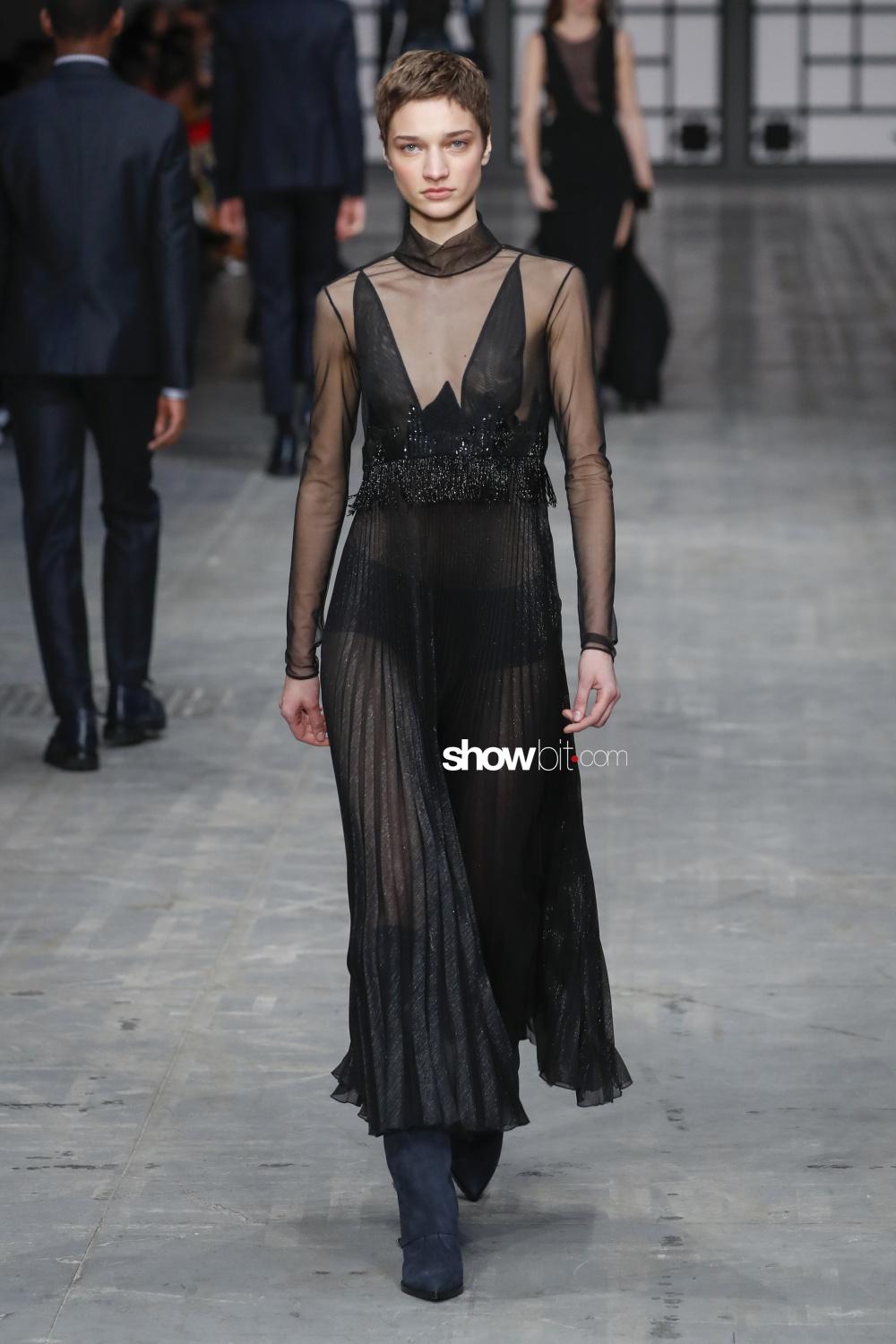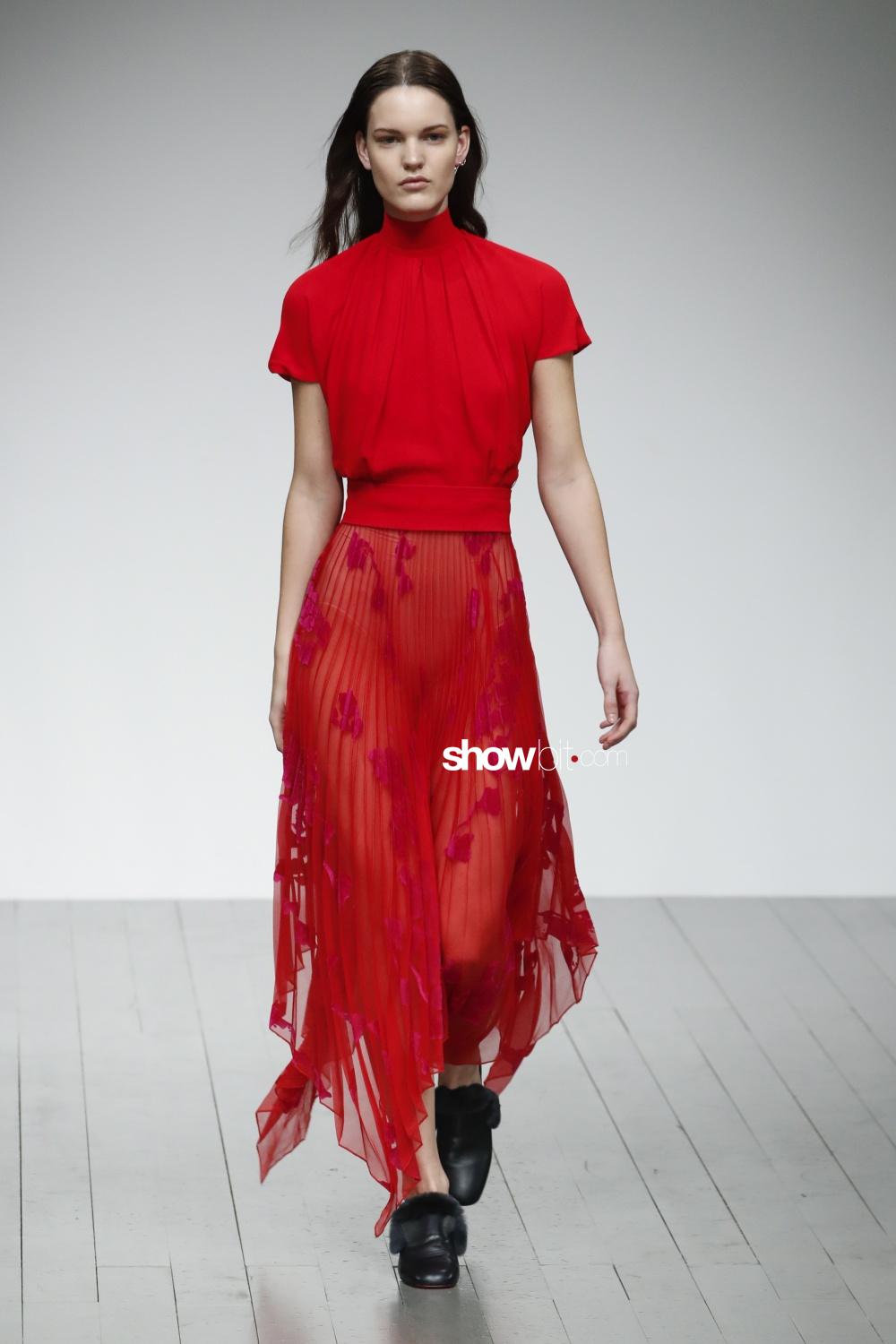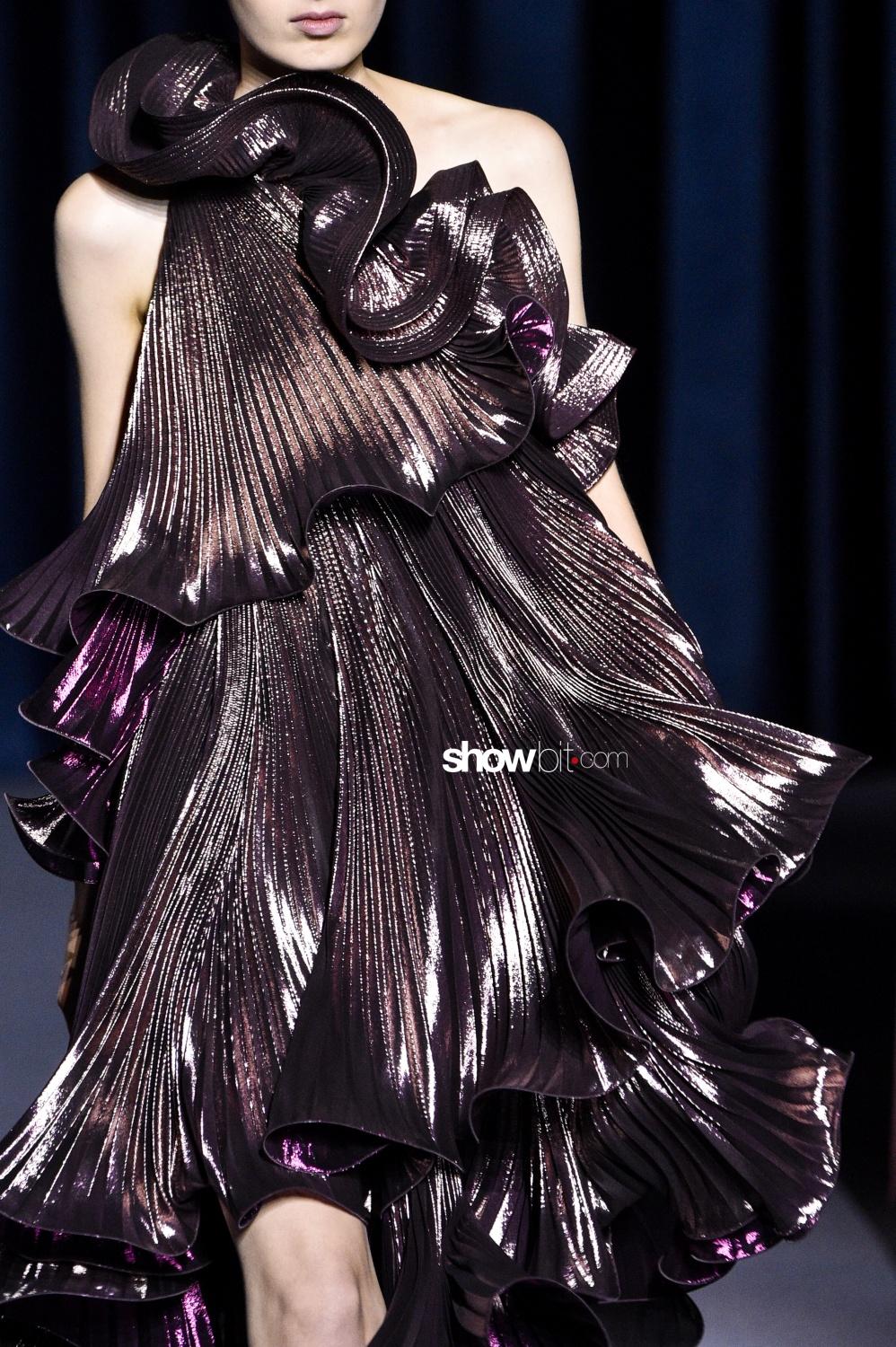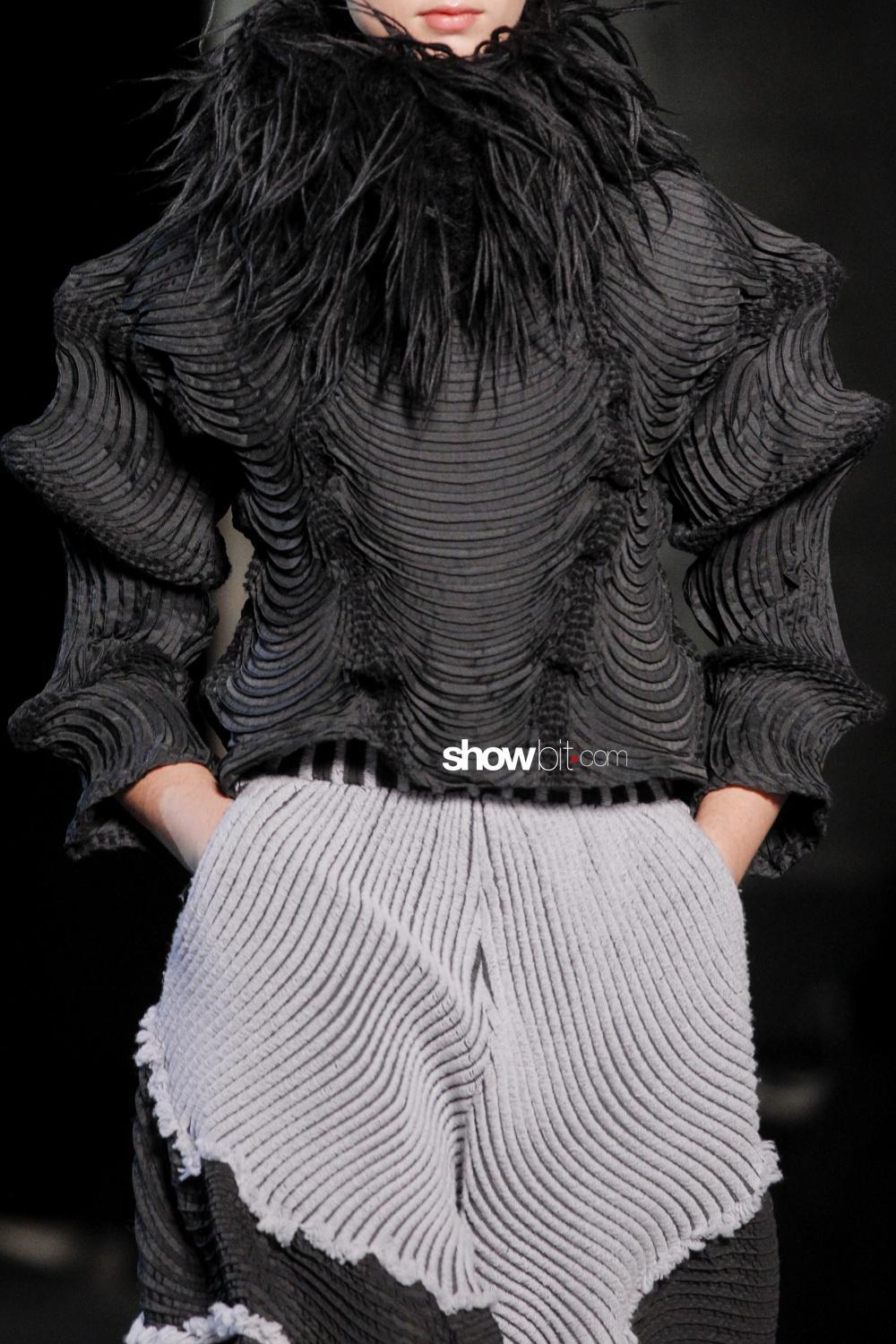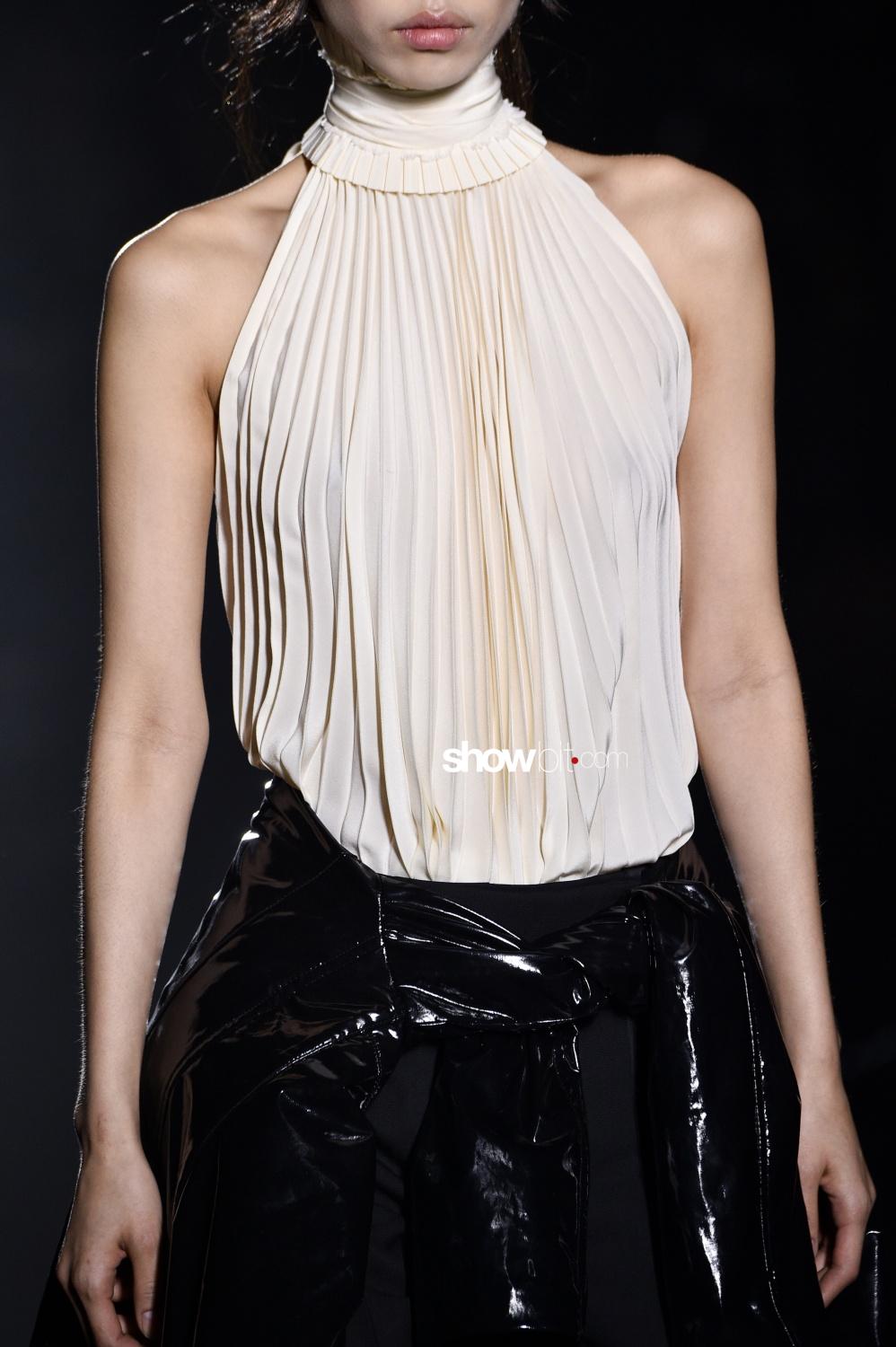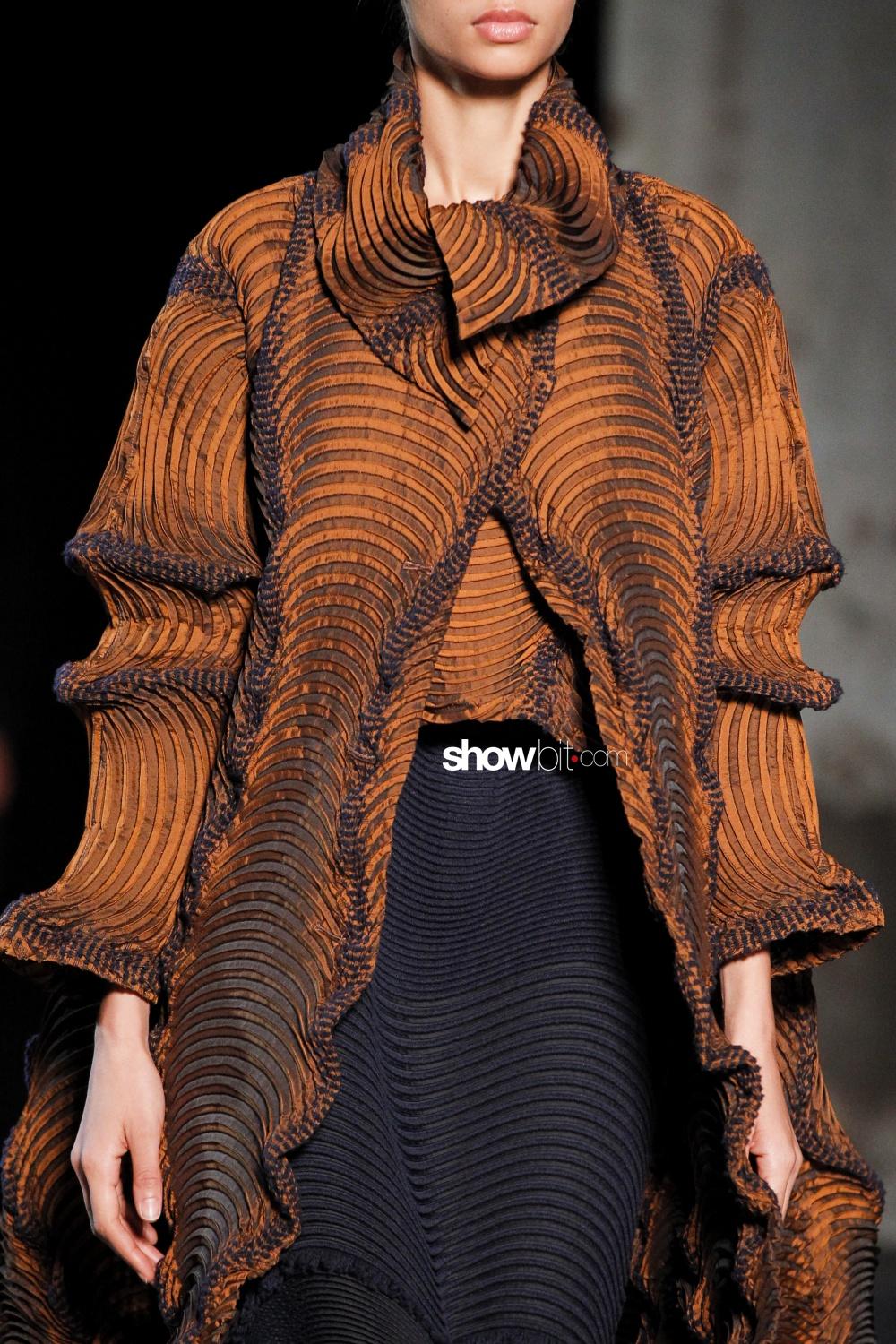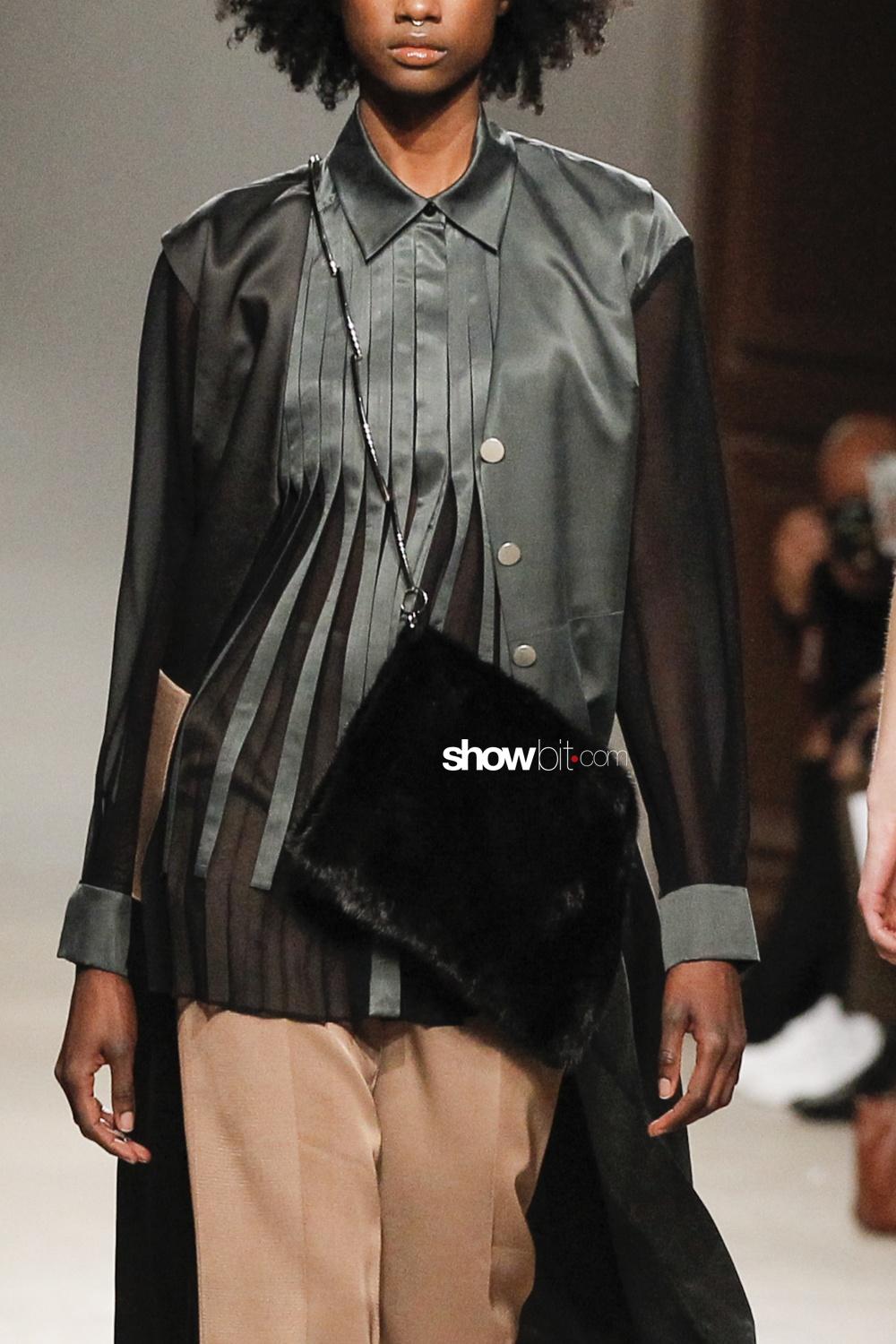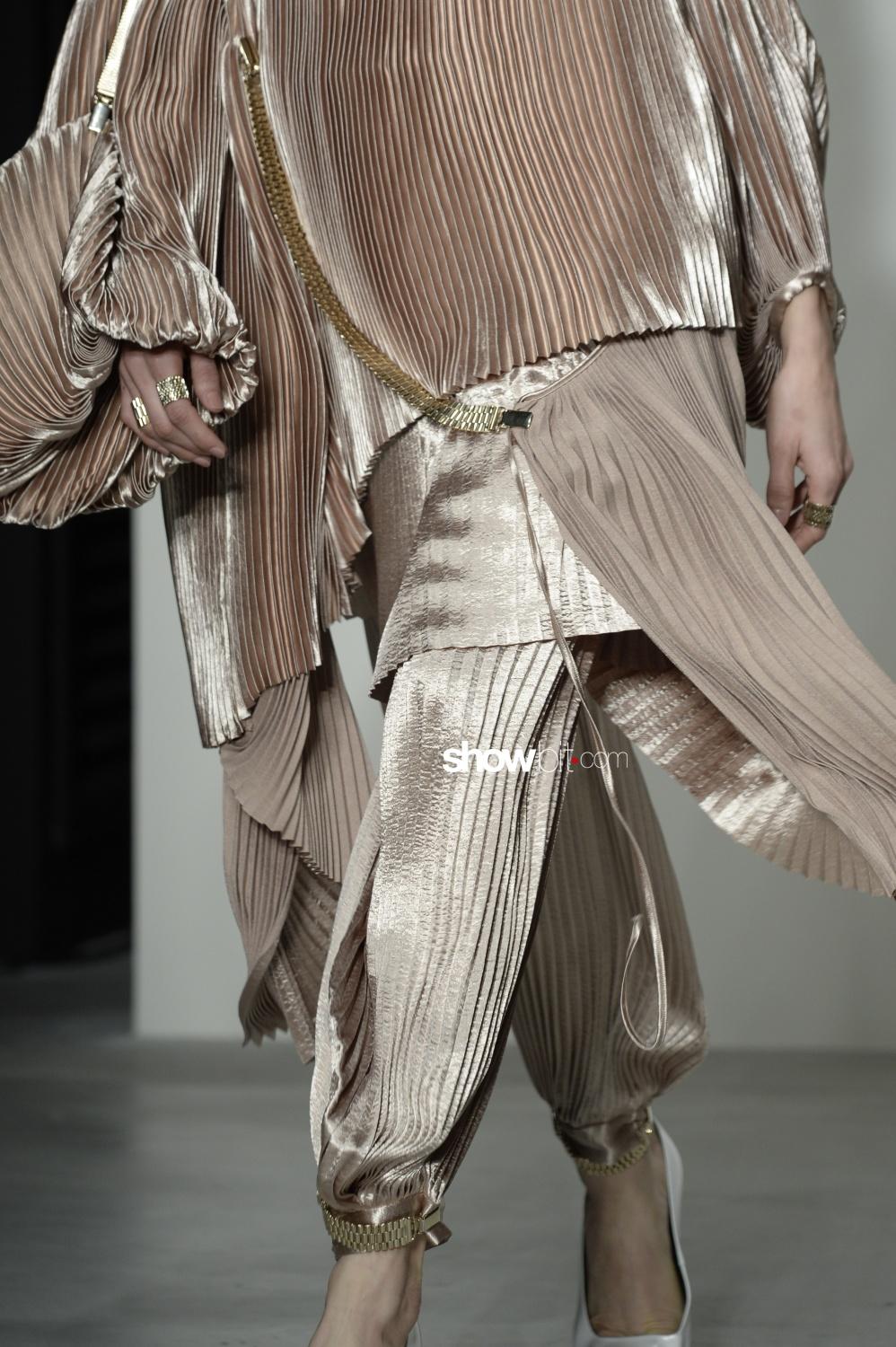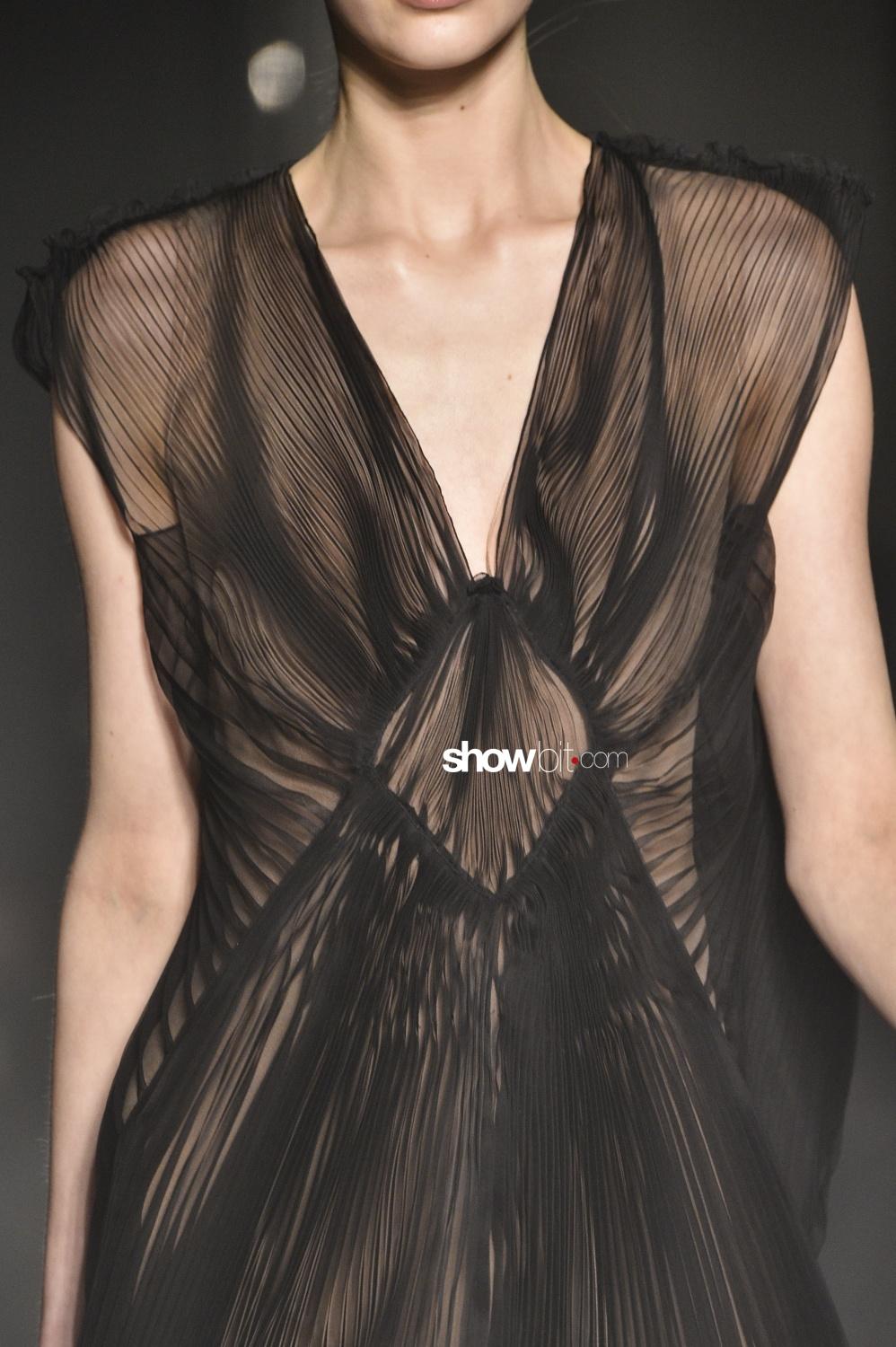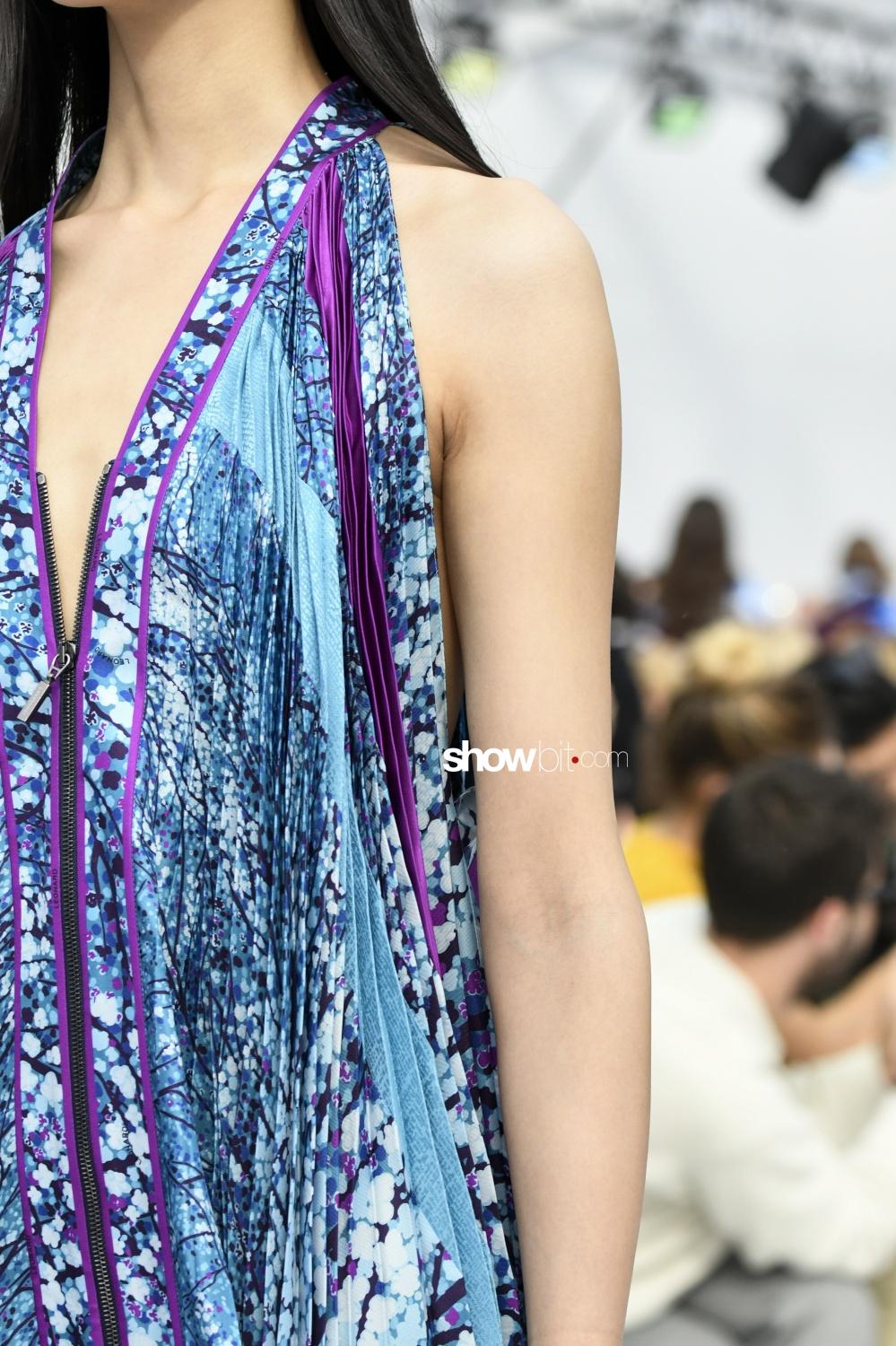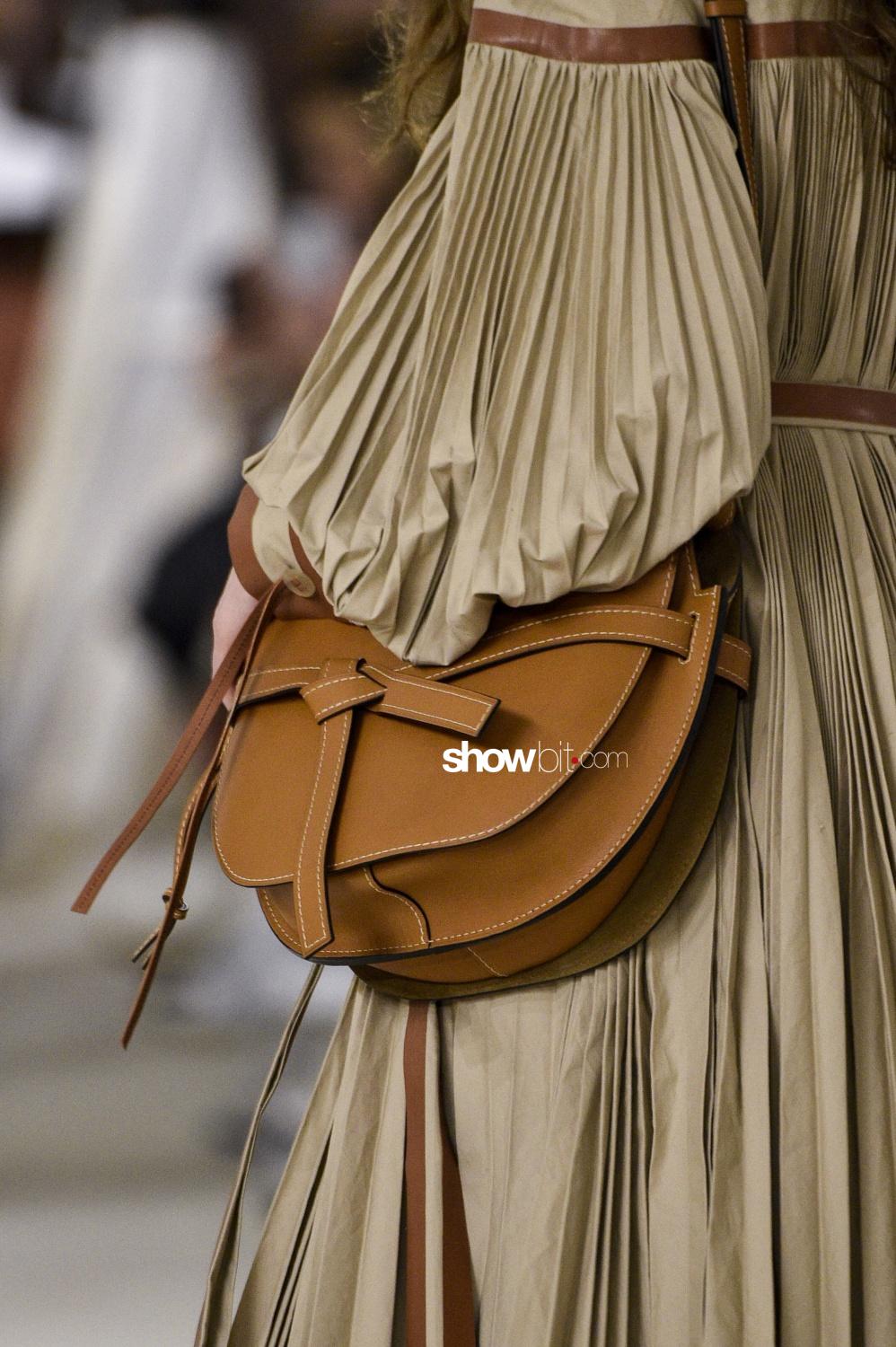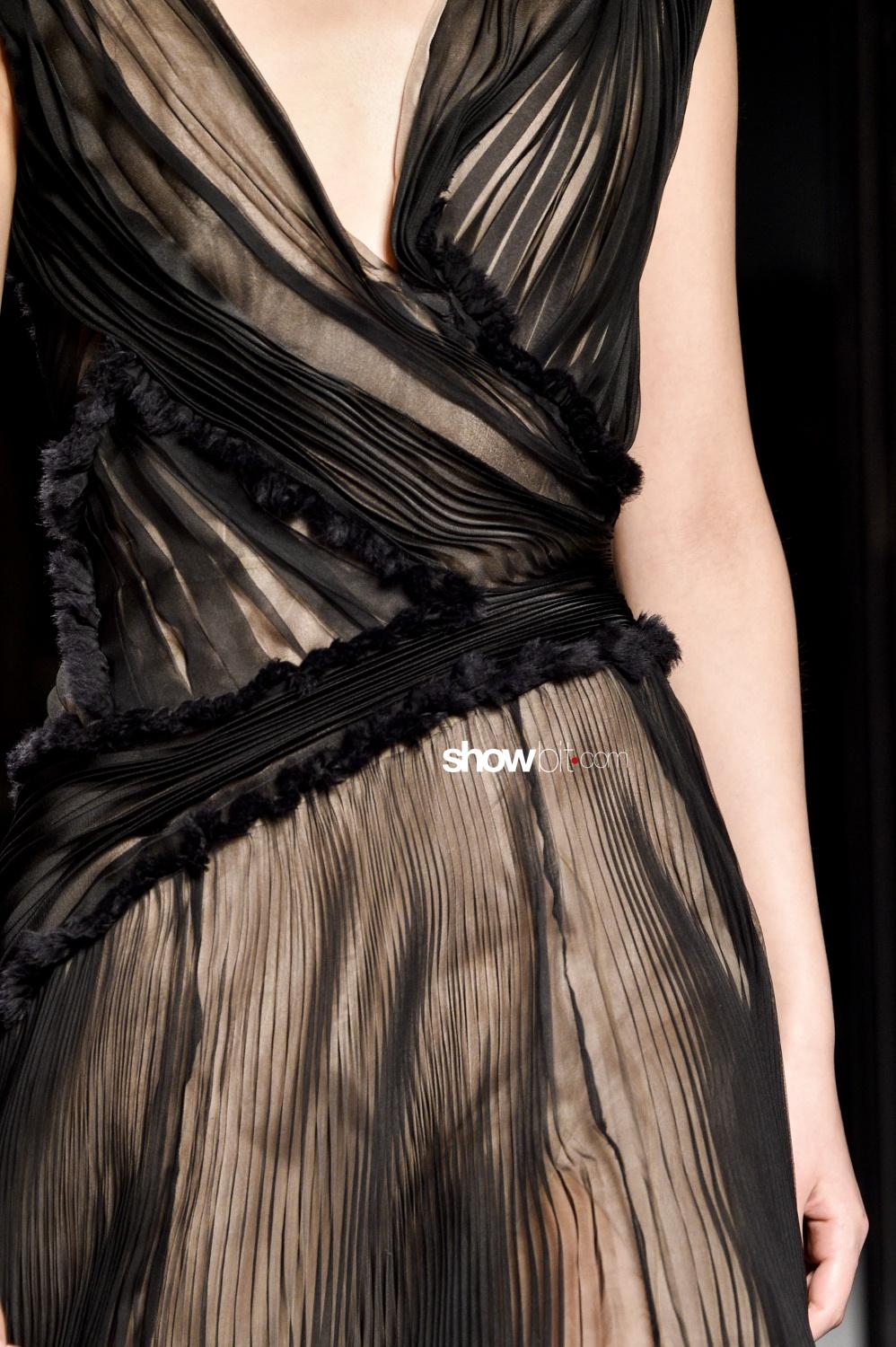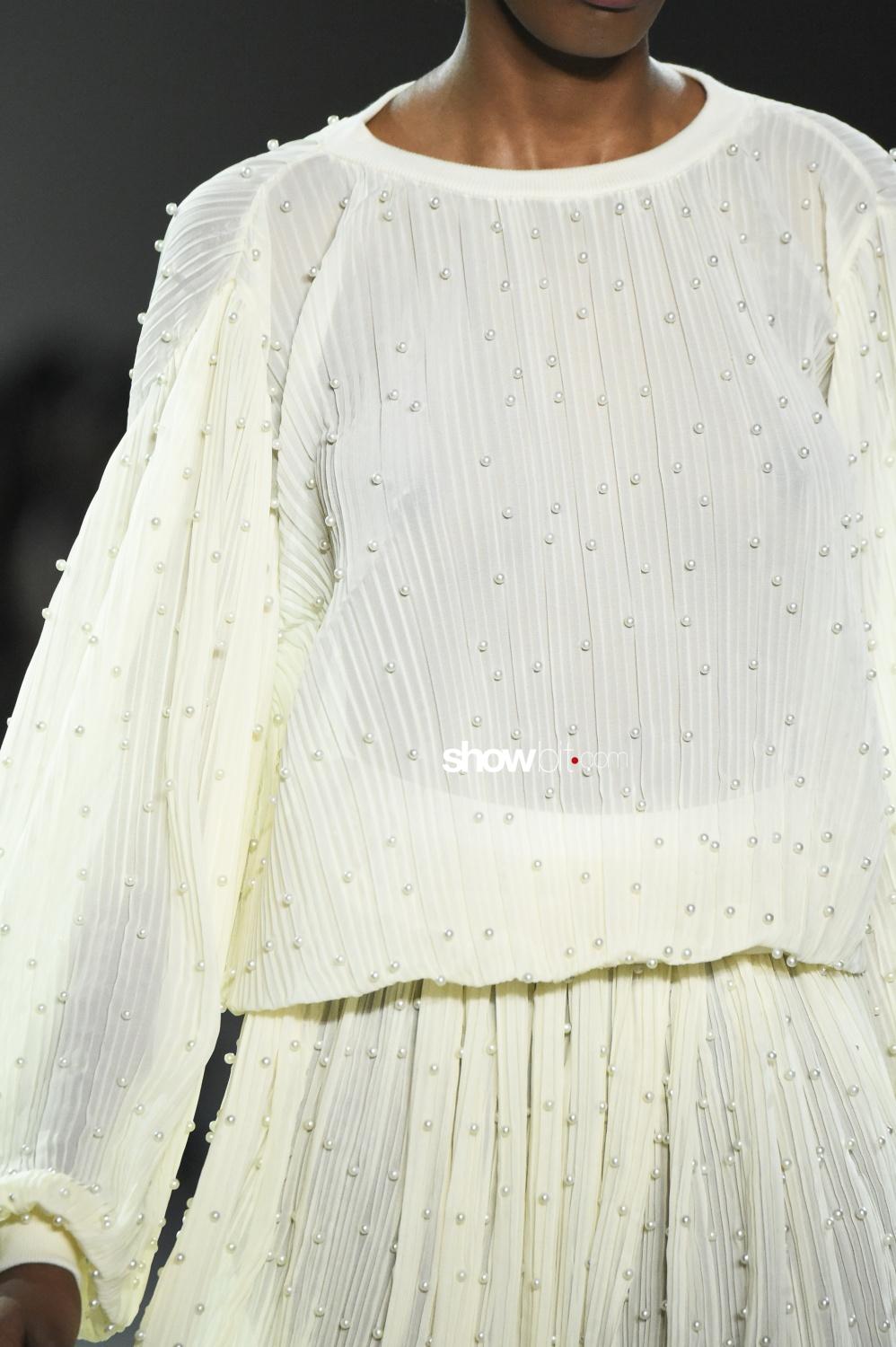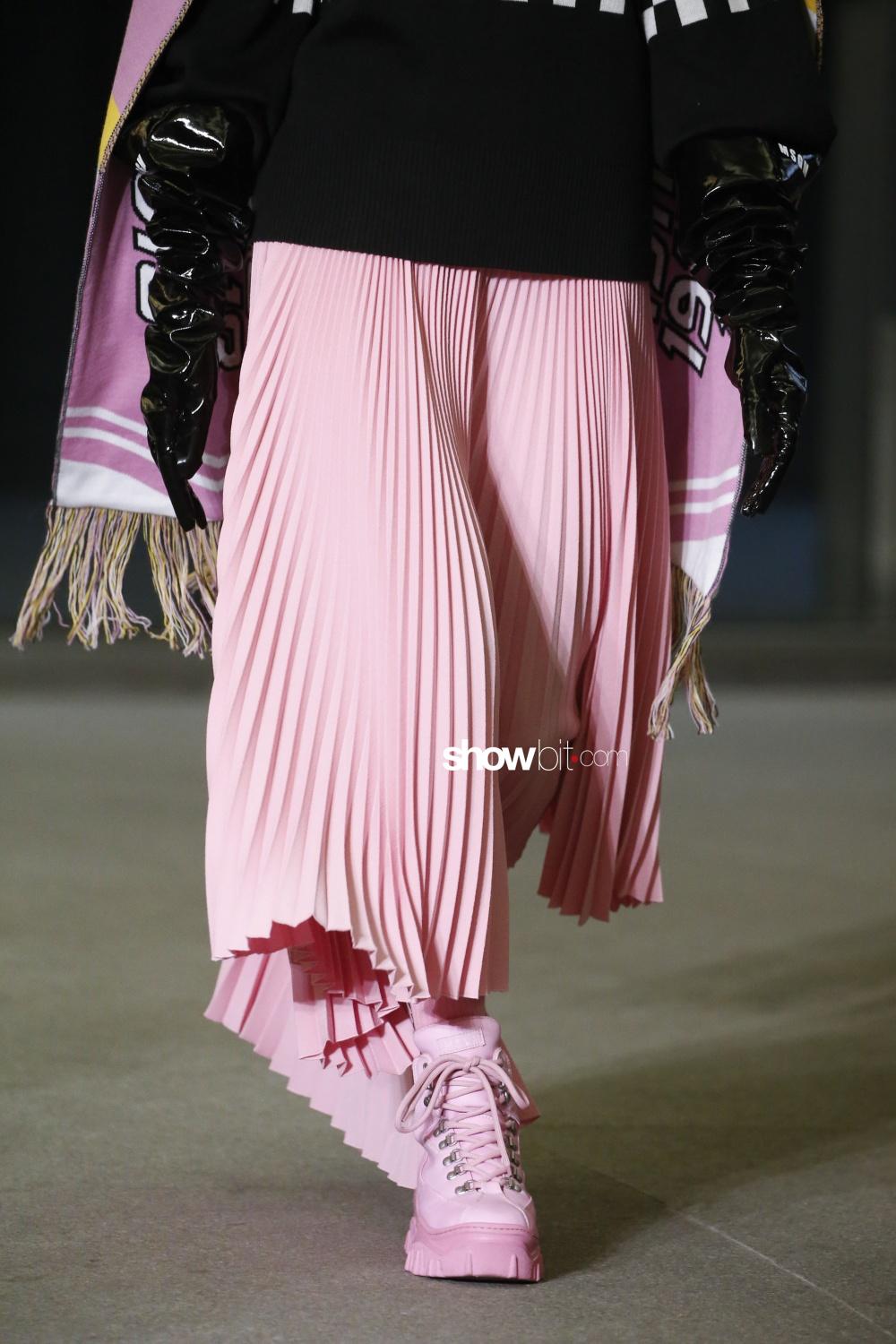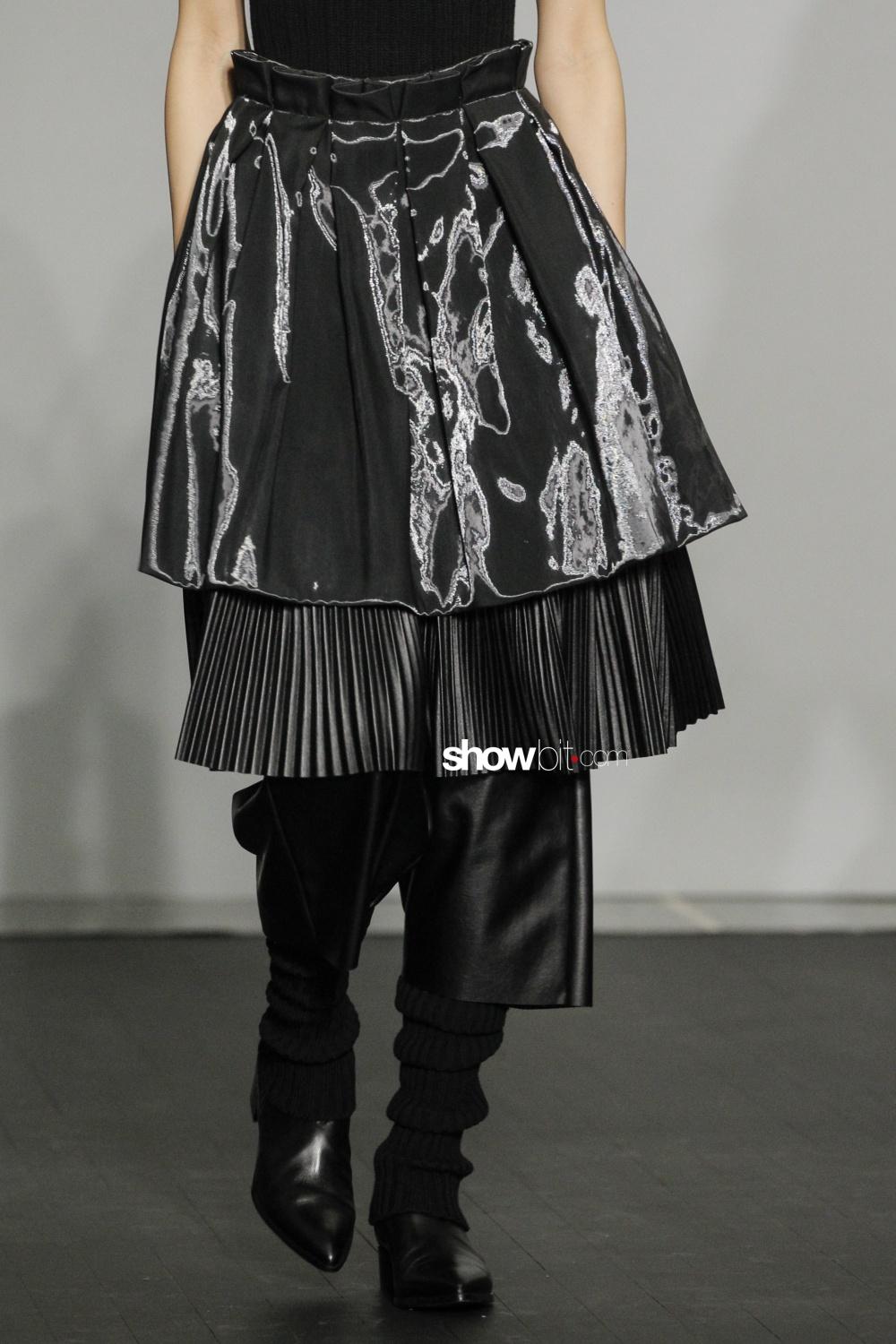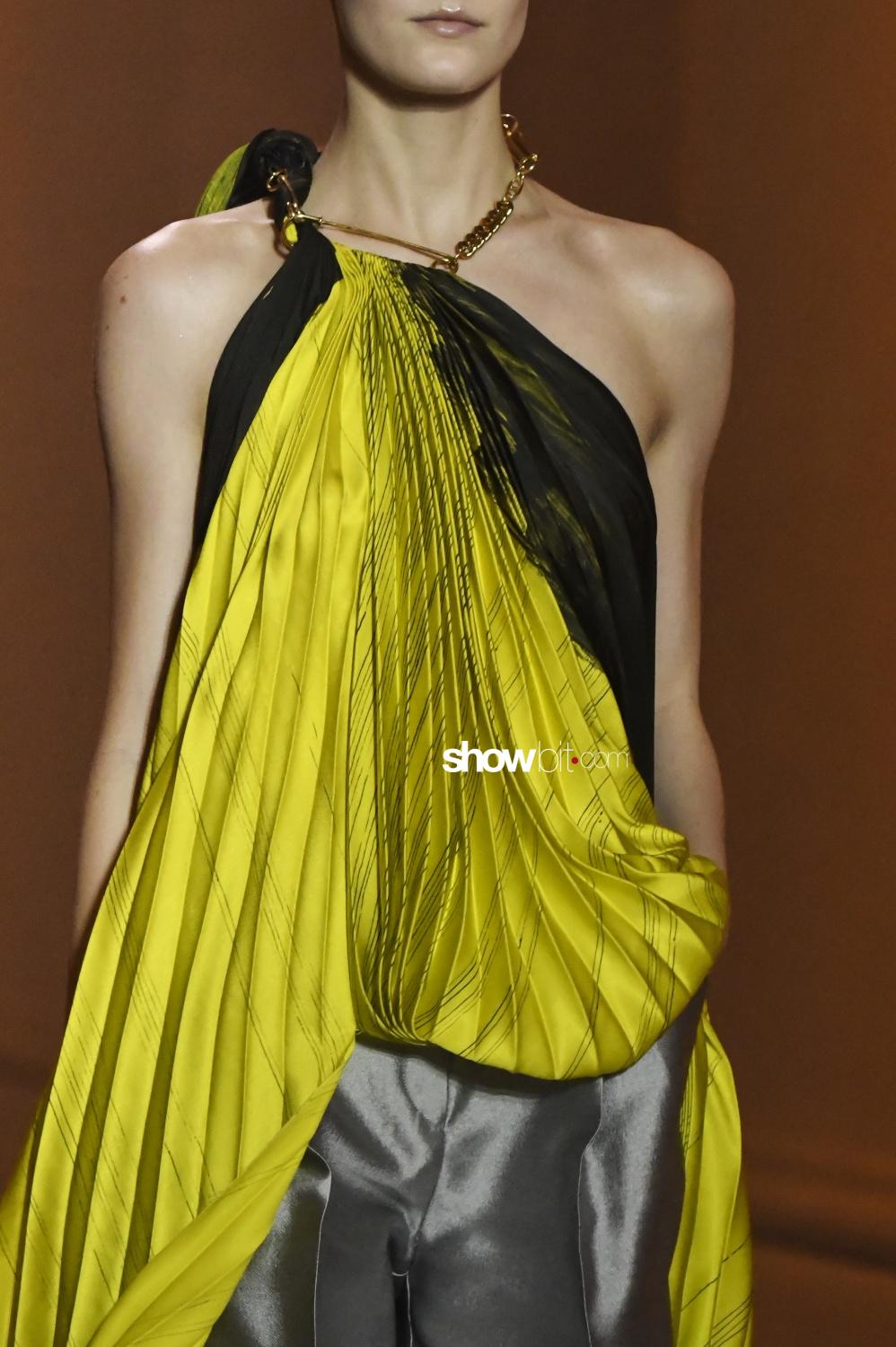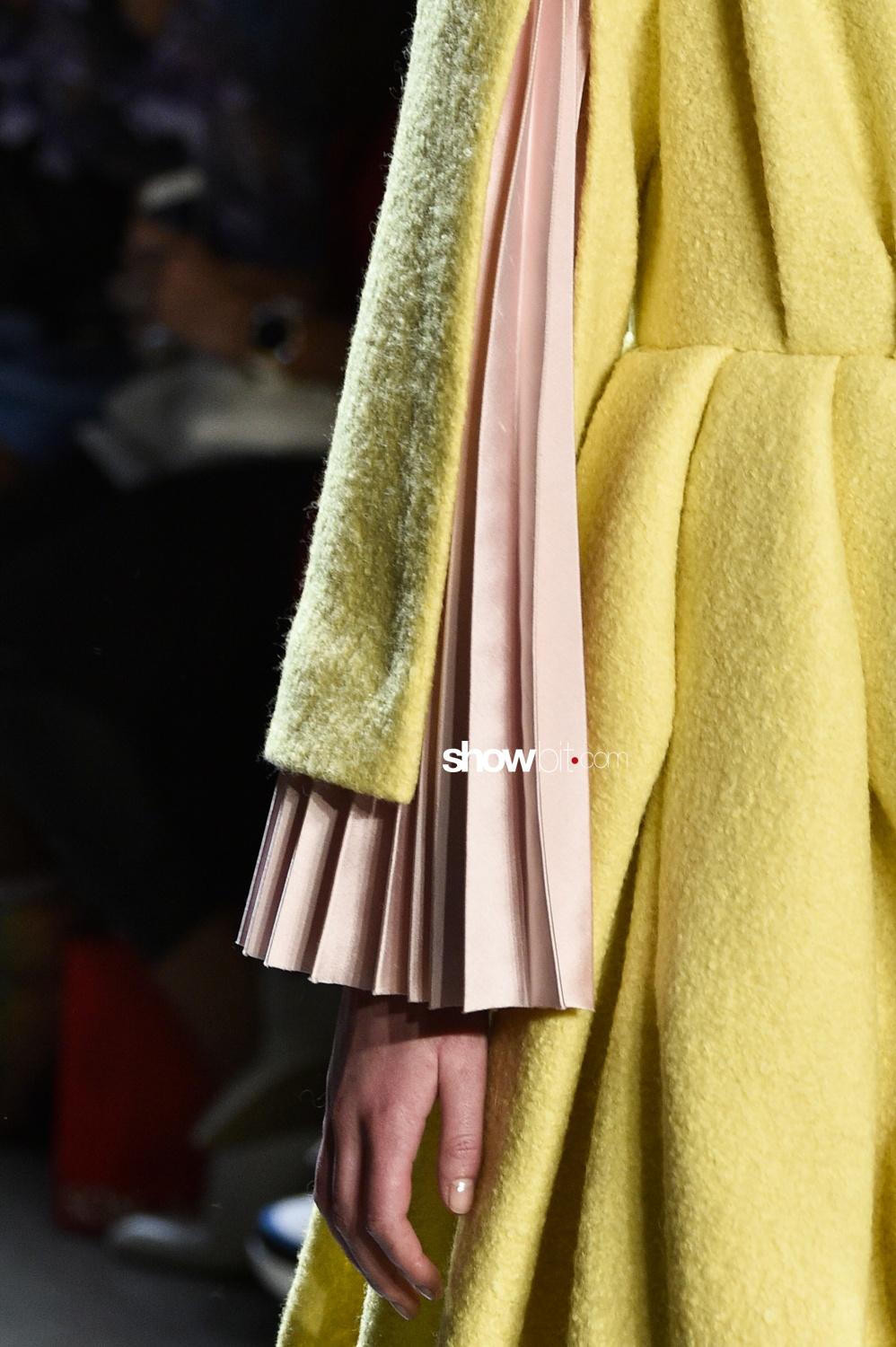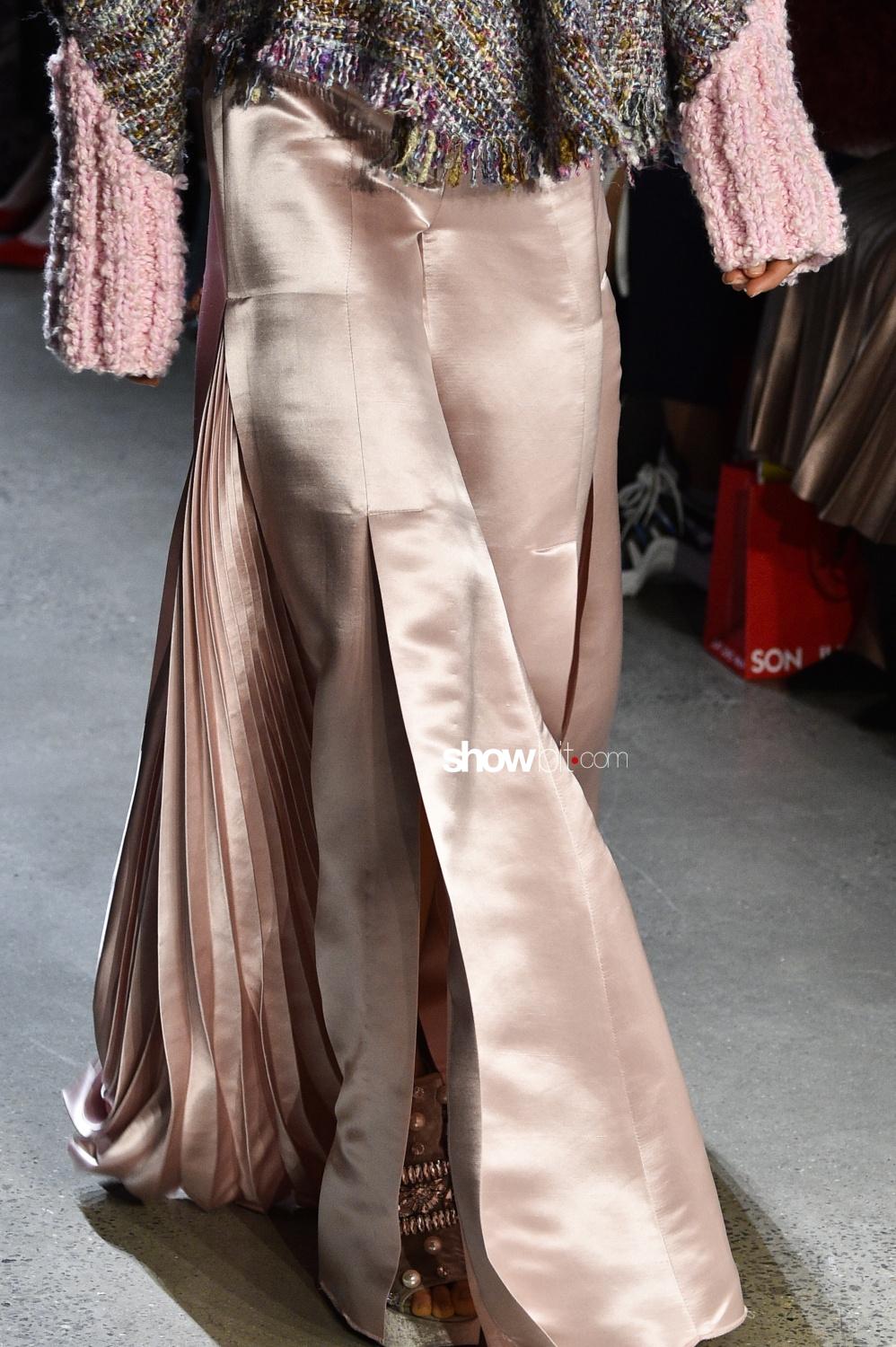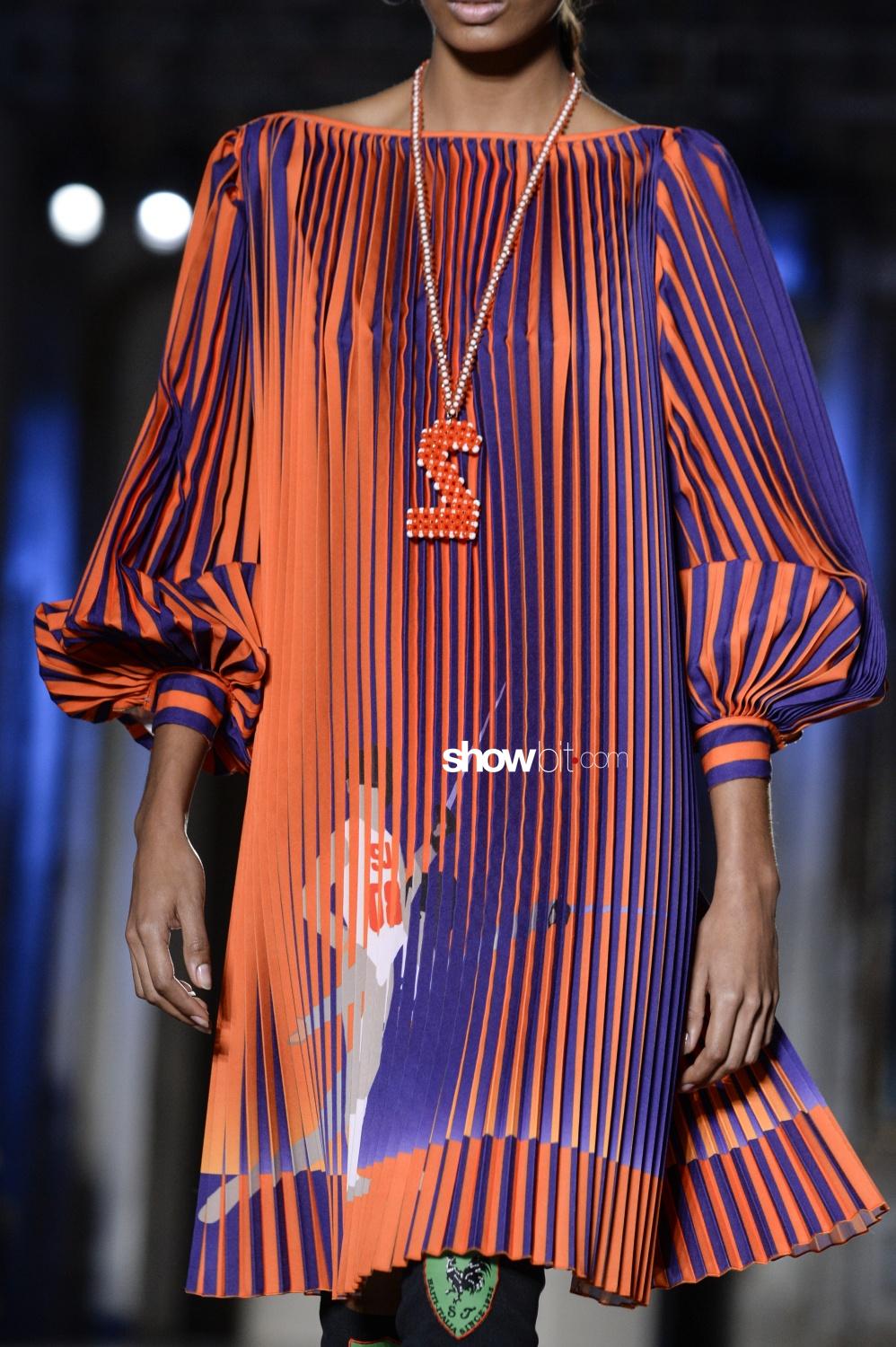See all the details from the catwaks:
Lanvin – Fall 2018 collection, Paris – details
Junya Watanabe – Fall 2018 collection, Paris – details
Issey Miyake – Fall 2018 collection, Paris – details
Poiret – Fall 2018 collection, Paris – details
Daizy Shely – Fall 2018 collection, Milano – details
The plissé technique from the catwalks
First appeared on catwalks in 1989 in one of the Issey Miyake collection, the plissé pleats became the signature of the Japanese designer, that founded a specified line in 1994, called “Pleats Please”. Since then, the pleats industry have grown and spread over the catwalks.
Issey Miyake is the master in handling the technique: the clothes are first cut and sewn together from a fabric that is three times larger than the finished garment. Then they’re sandwiched between sheets of paper and hand fed into a pleats machine. The heat generates permanent pleats that are highly functional, wrinkle-proof and very pleasant to see.
The plissé technique is now handled by many contemporary designers, who like combining it with solid fabrics, resulting into pleasing consistencies contrasts on shirts, skirts, dresses and trousers.
Junya Watanabe uses plissé fabric to conceive architectural and abstract volumes.
The new Poiret creative director Yiqing Yin is also passionate about pleats: for her Fall 2018 collection she created plissé dresses by gathering and twisting the volumes at the neckline and then letting them flow down the body.
For Lanvin, Olivier Lapidus chose to drape the pleated fabrics into refined constructed dresses.
Daizy Shely and Givenchy are playing instead with layers of plissé fabrics to create voluminous silhouettes.
We gathered some of the best pleating pictures from the Fall 2018 catwalks. Take a look and find more images on database in the link below:
These photos are only a low resolution demonstration.
If you want to use the hight resolution, you must subcribe to our images database. You may ask us any commercial information simply filling out our Contact Form. For editorial use only.
Follow us with the hashtag #showbitcom



